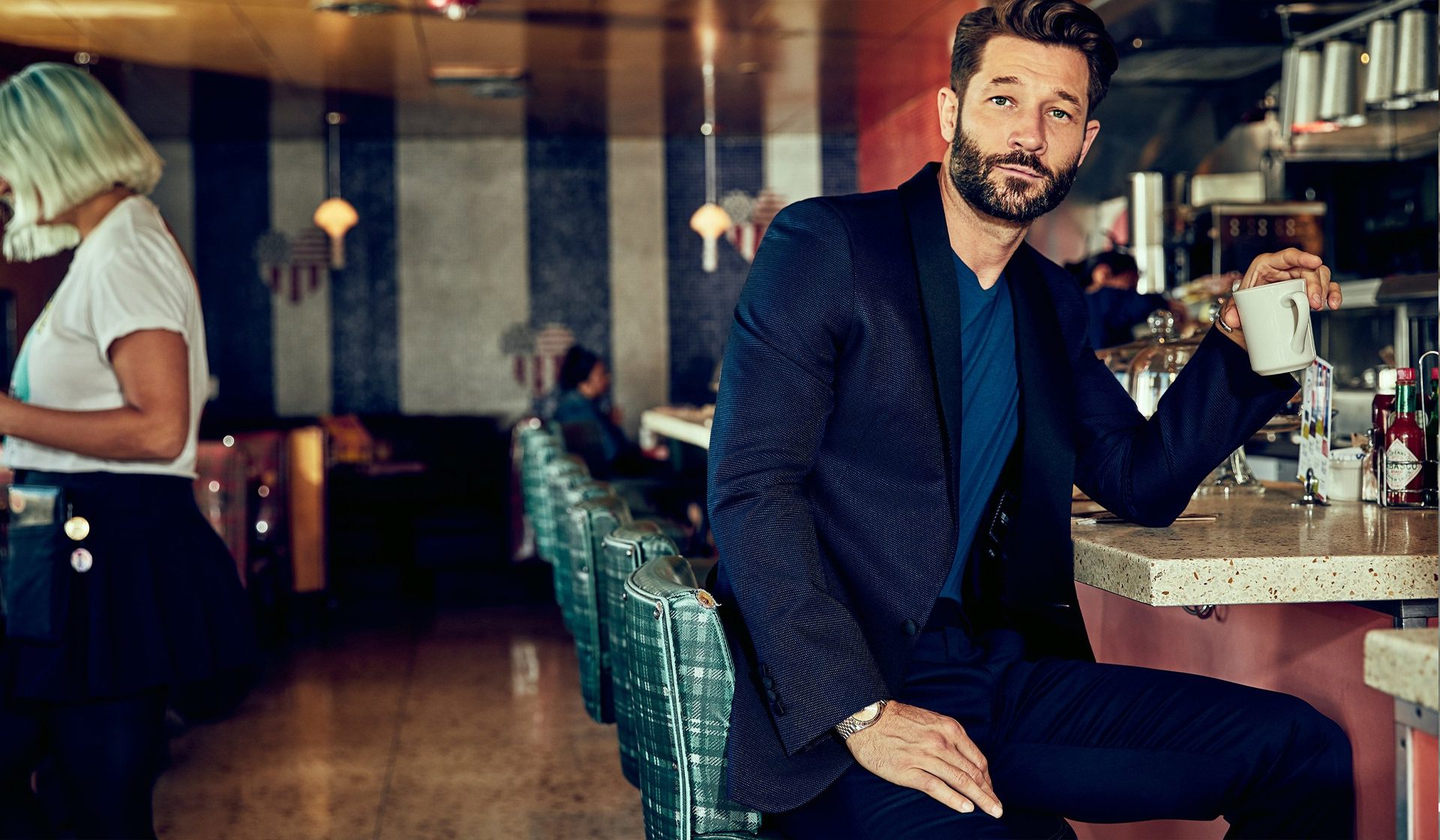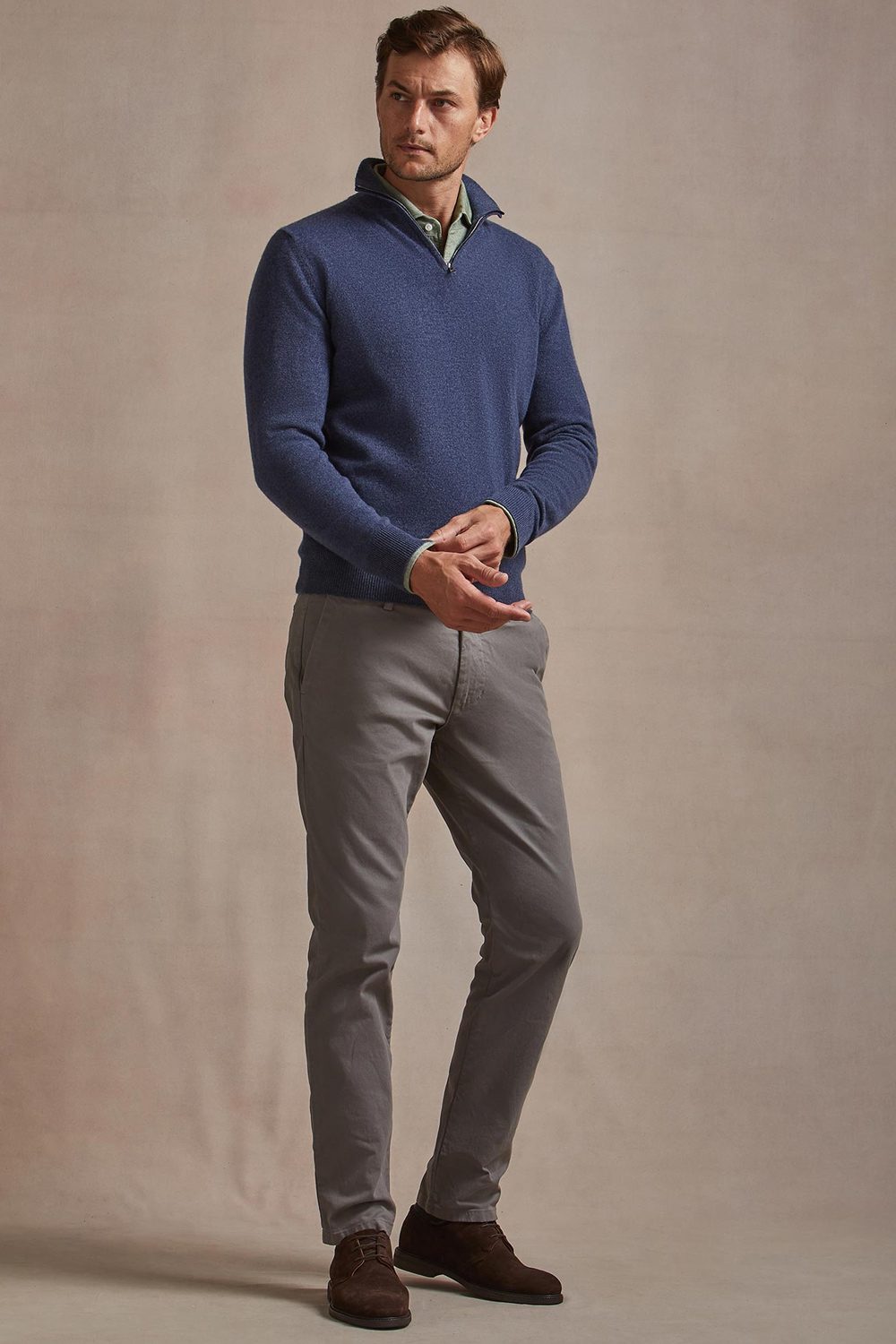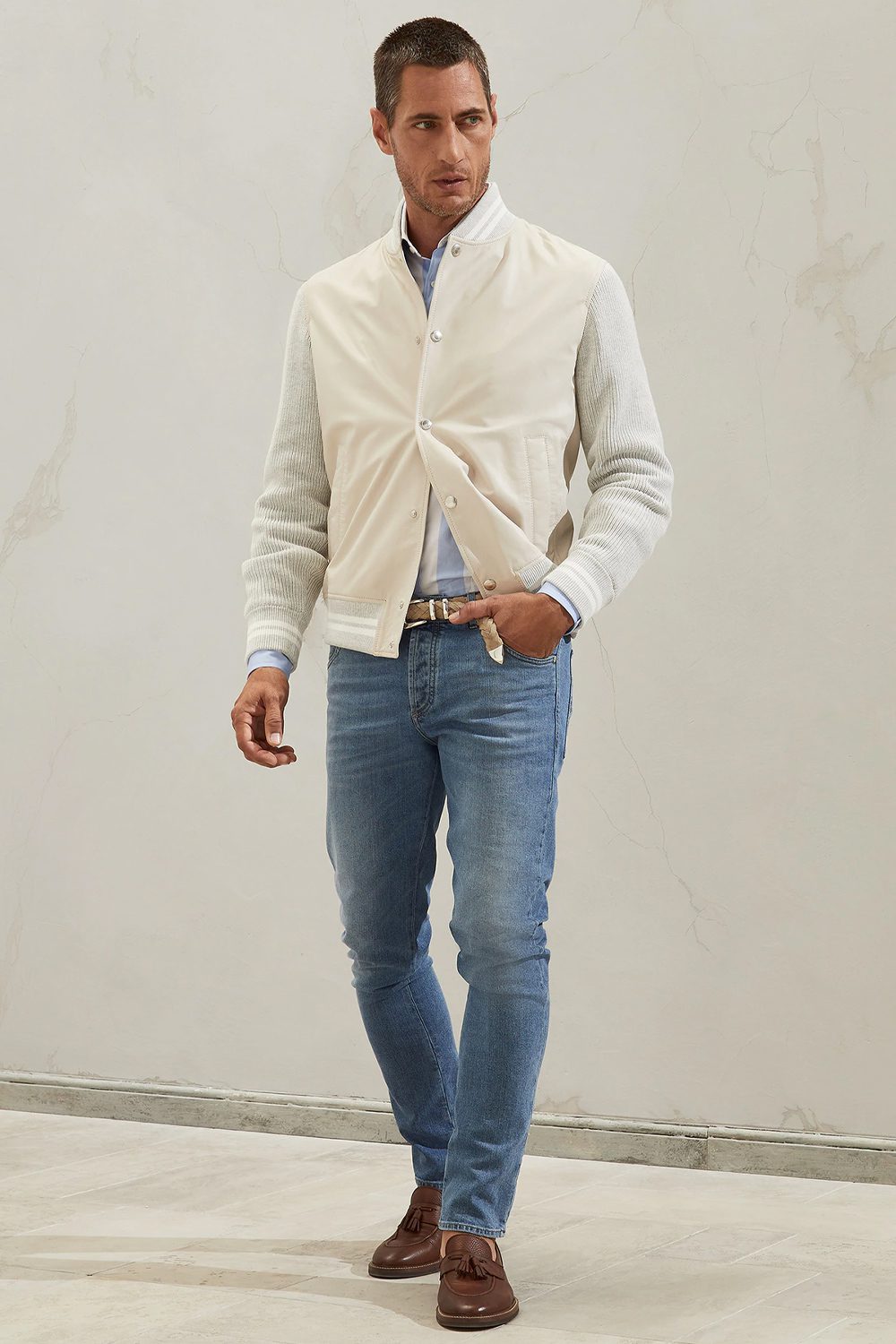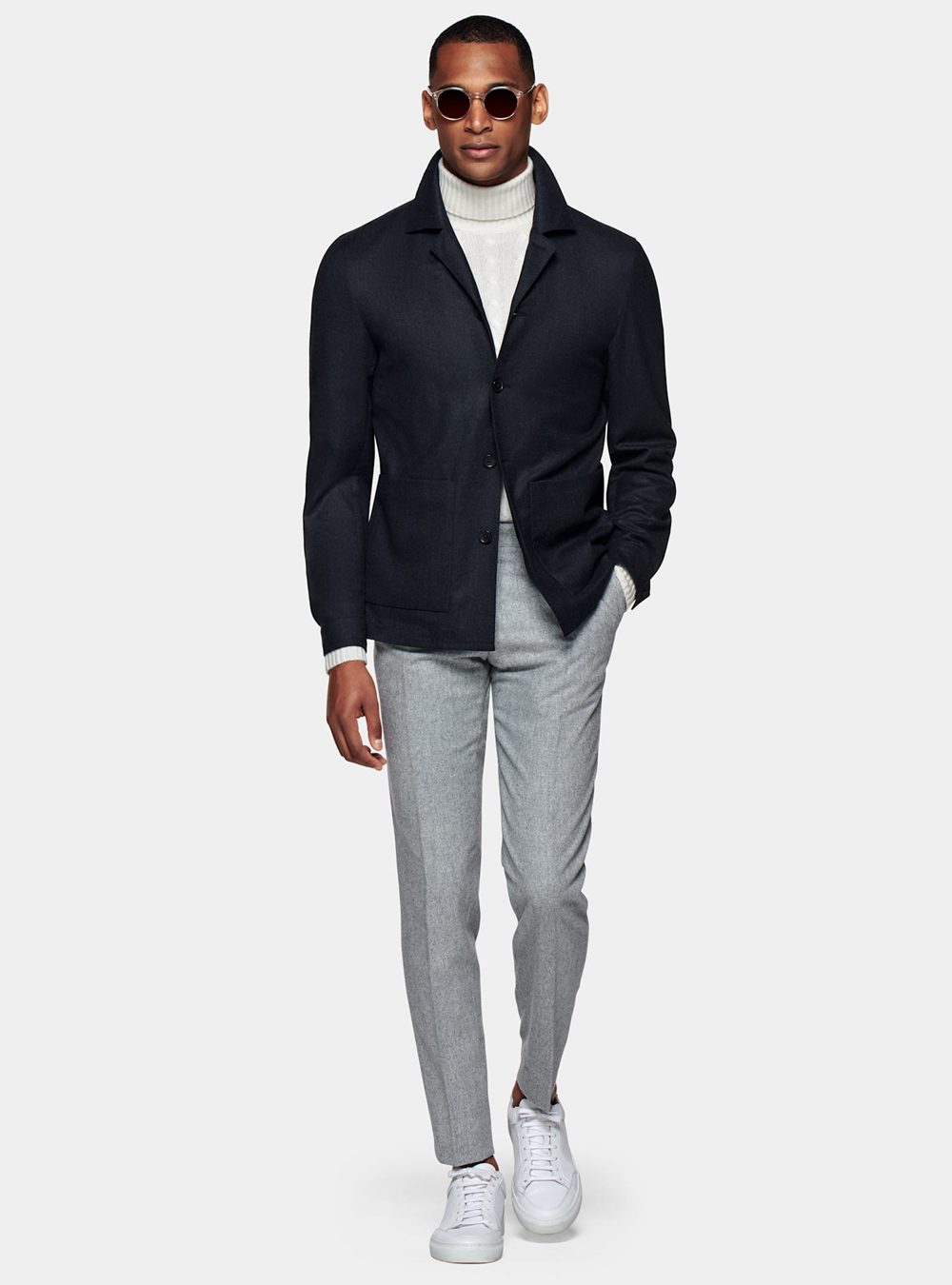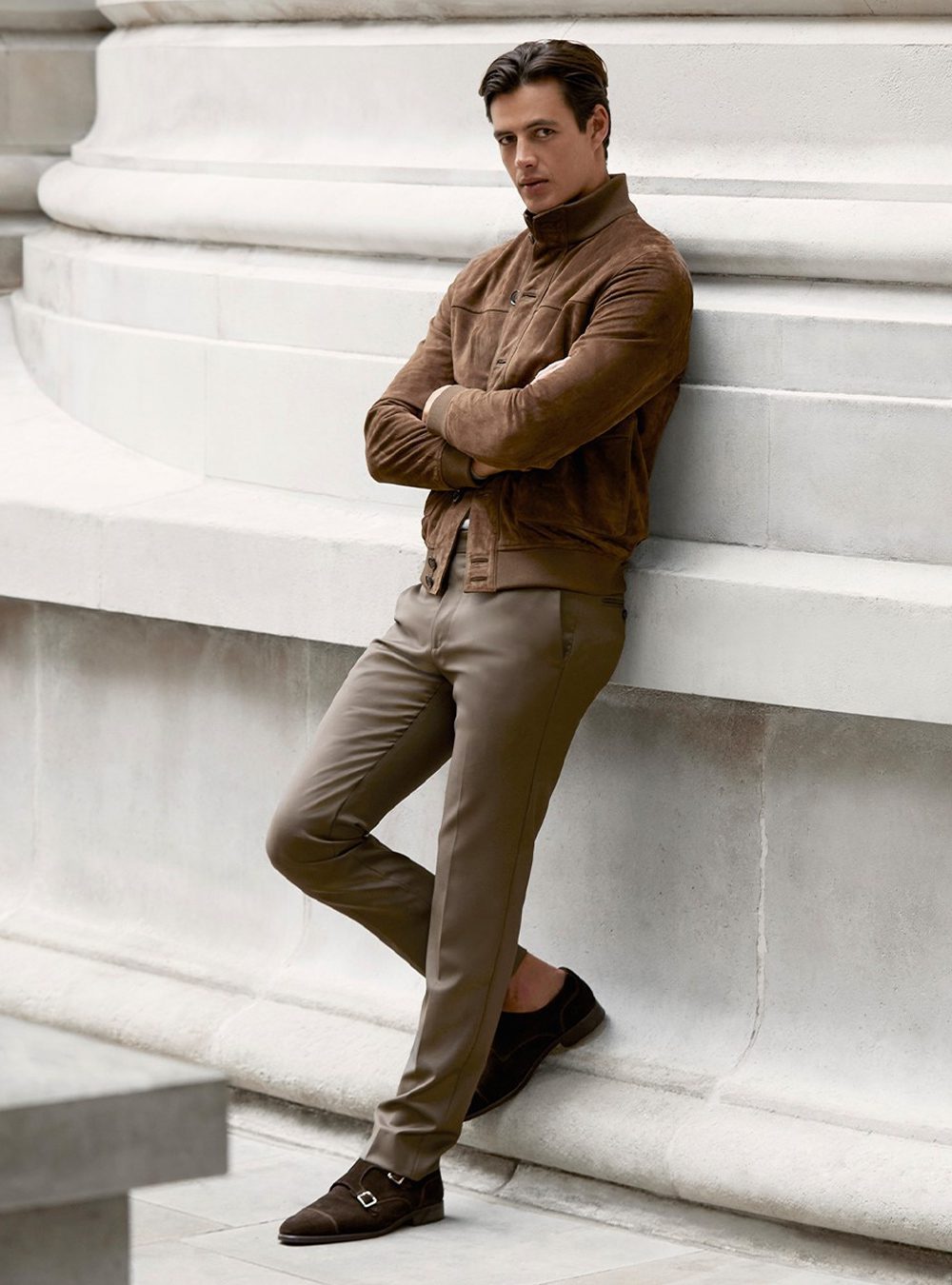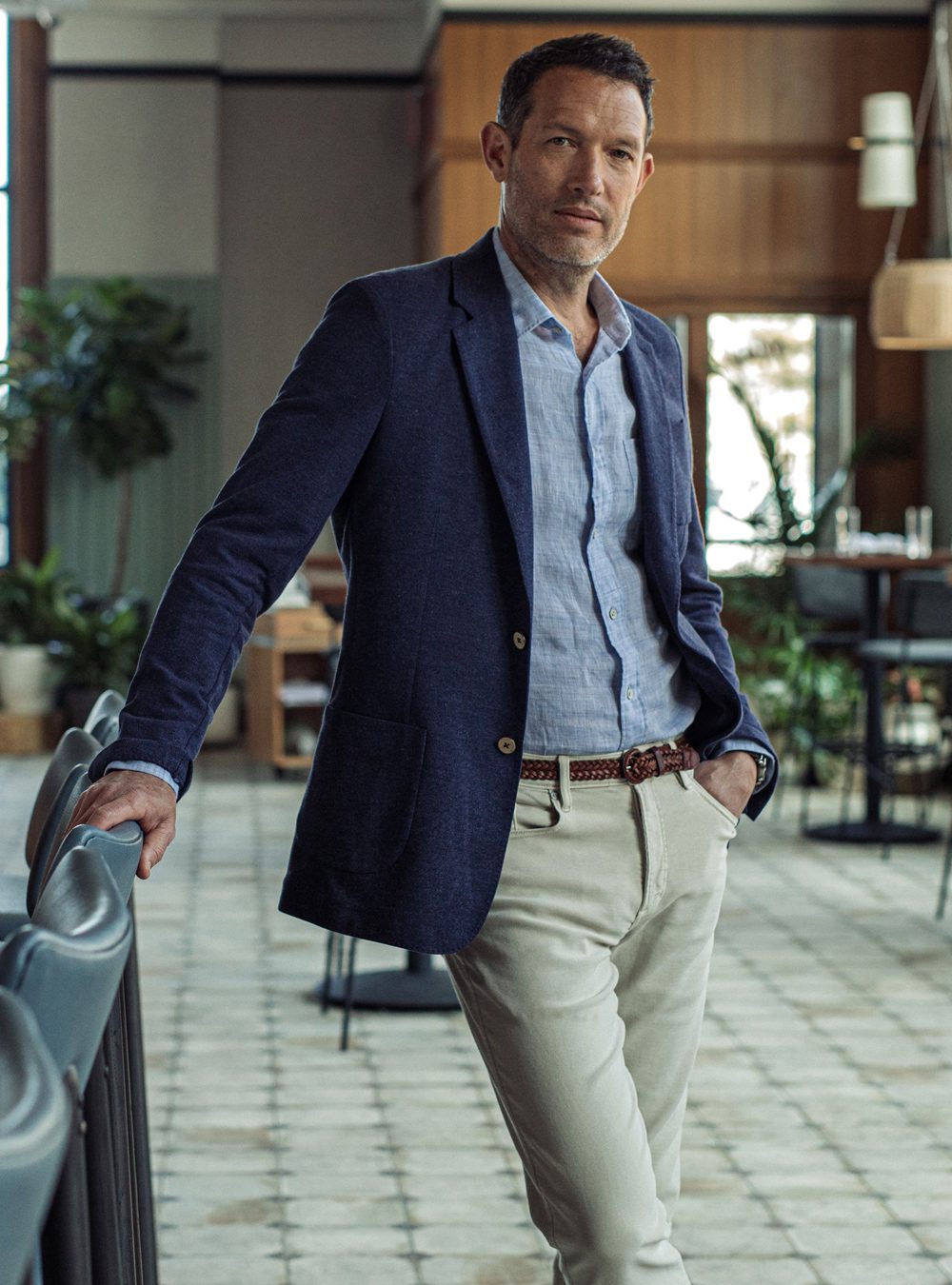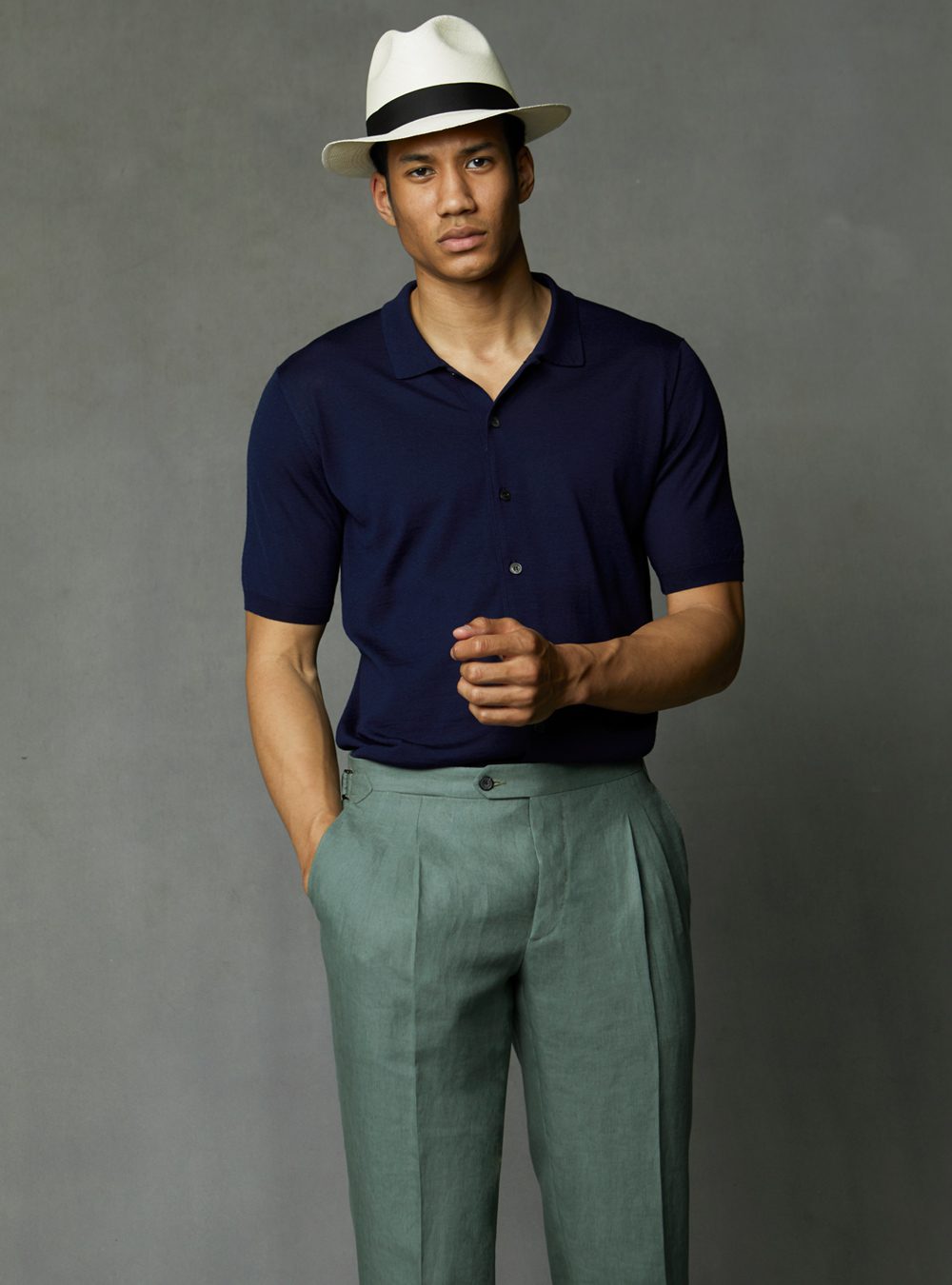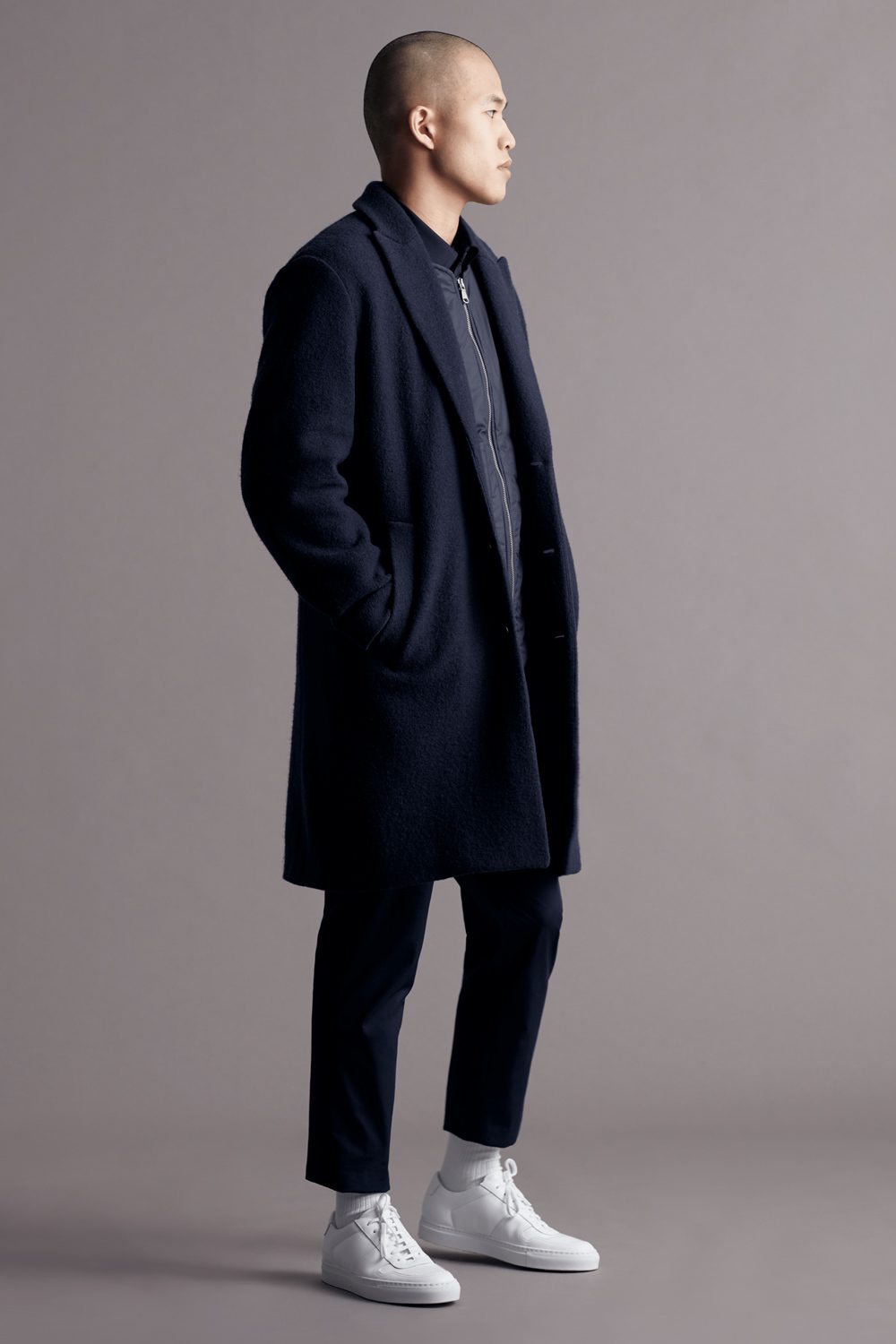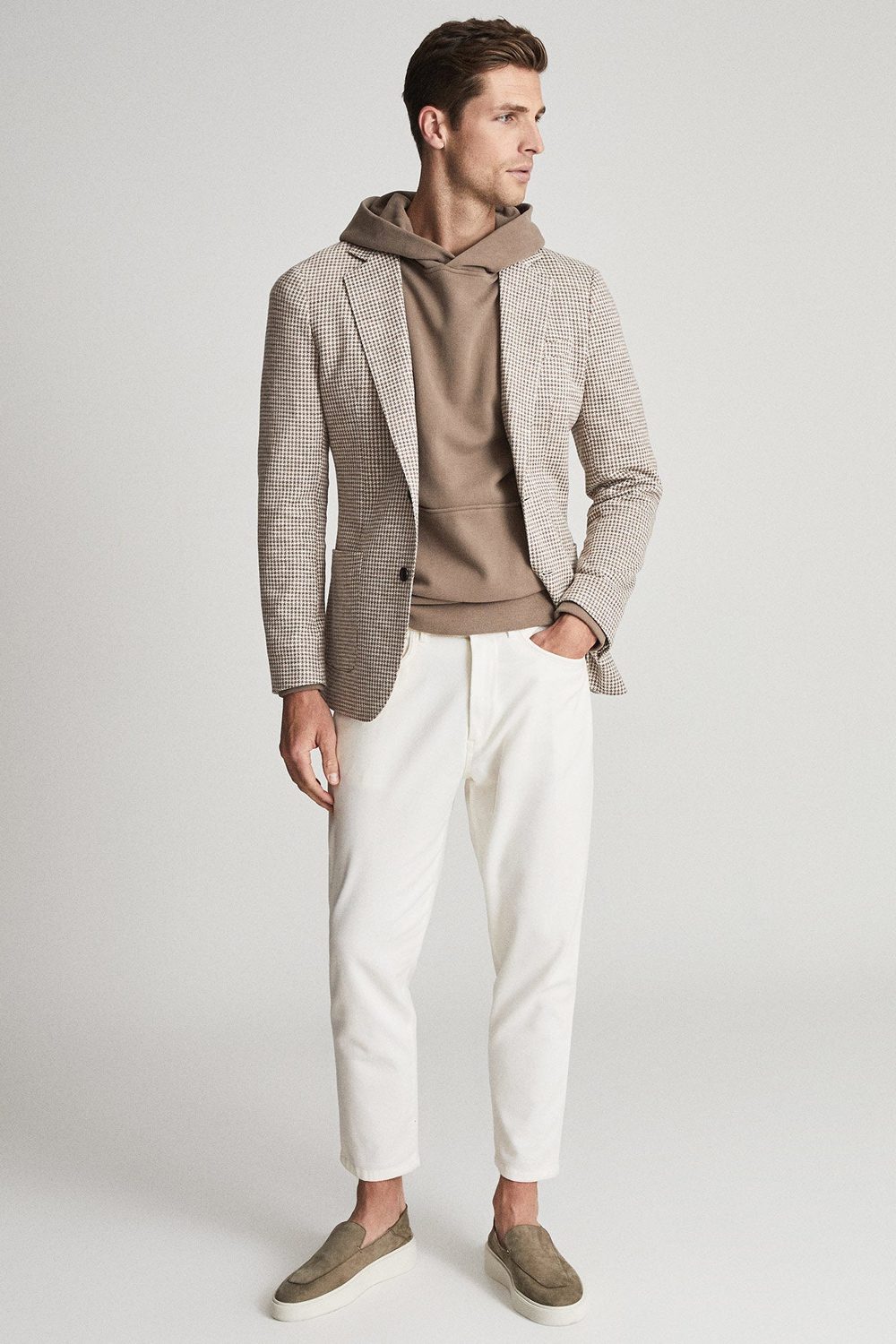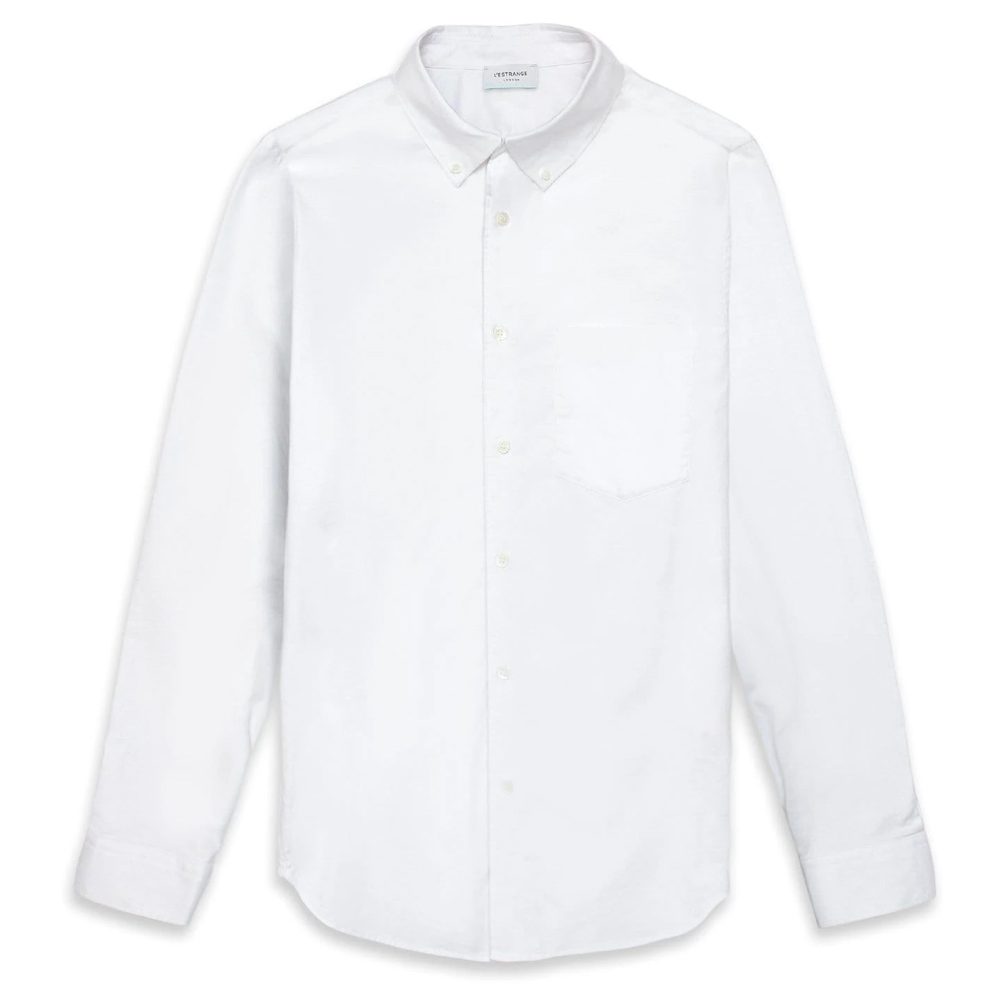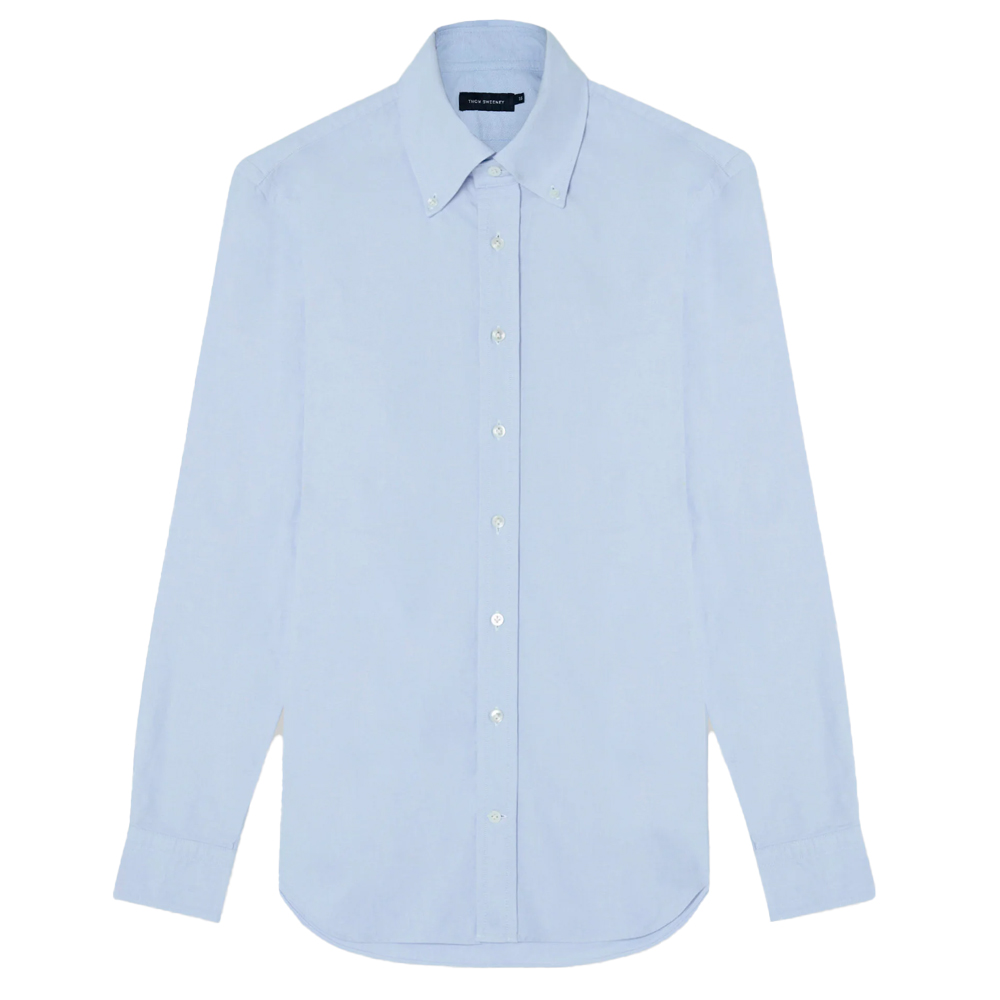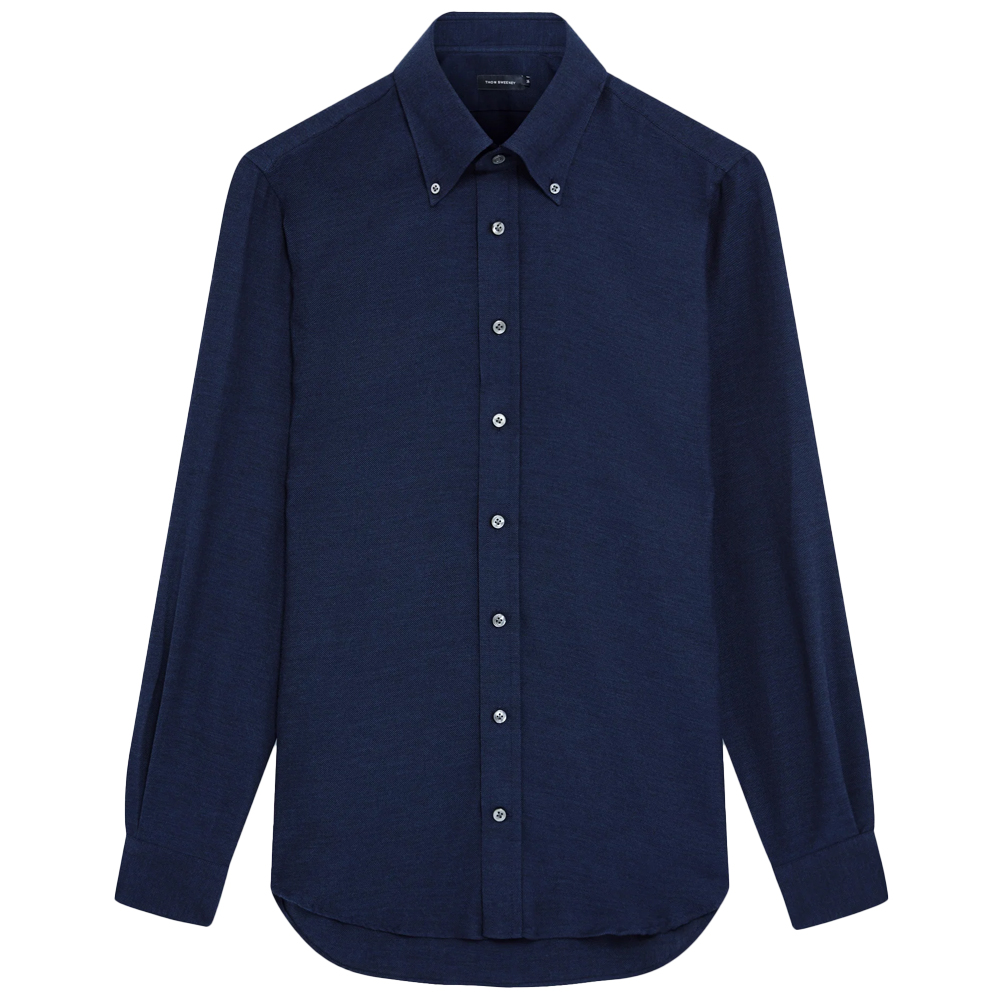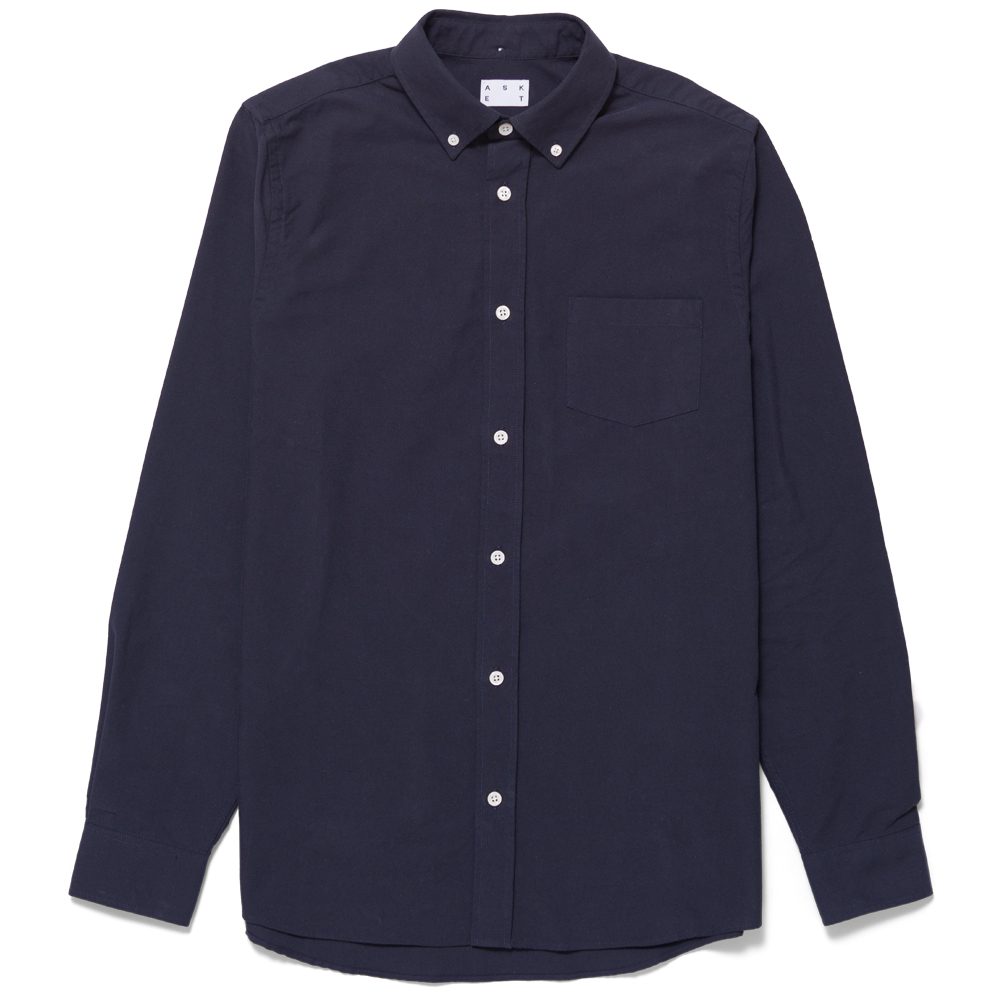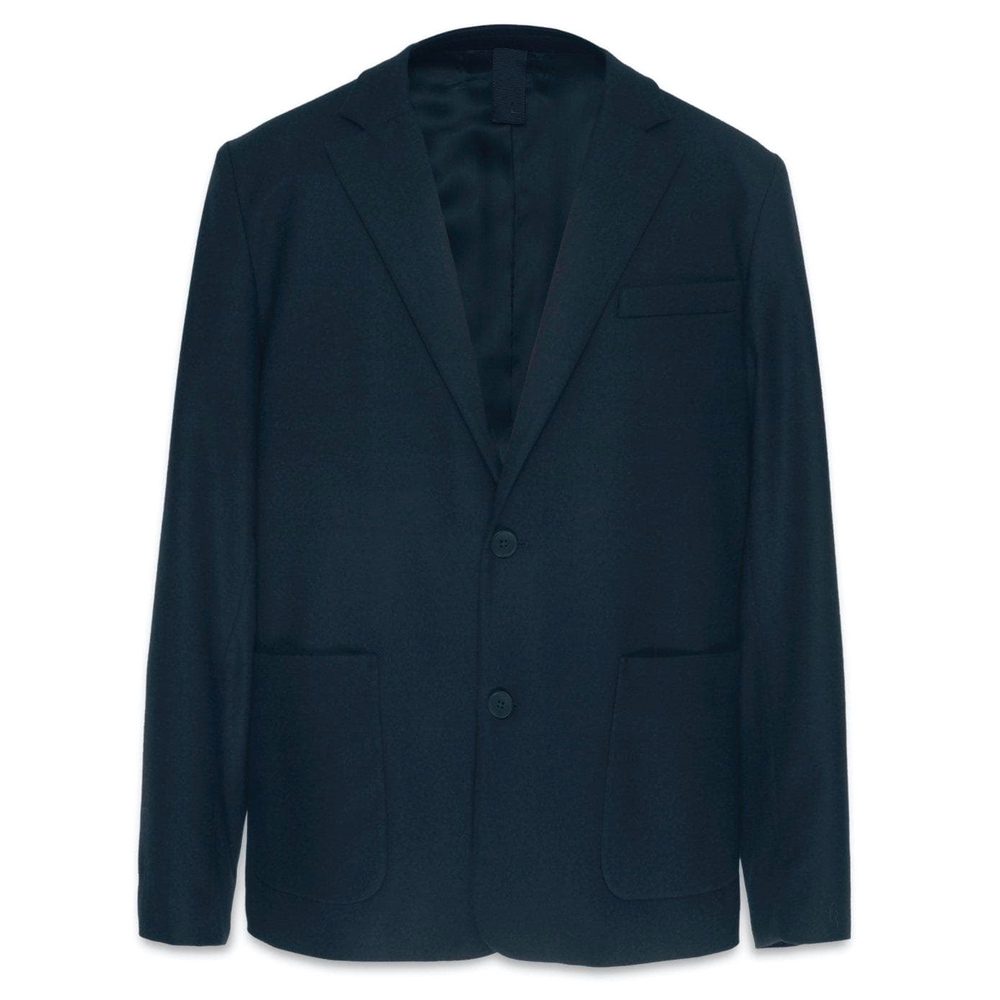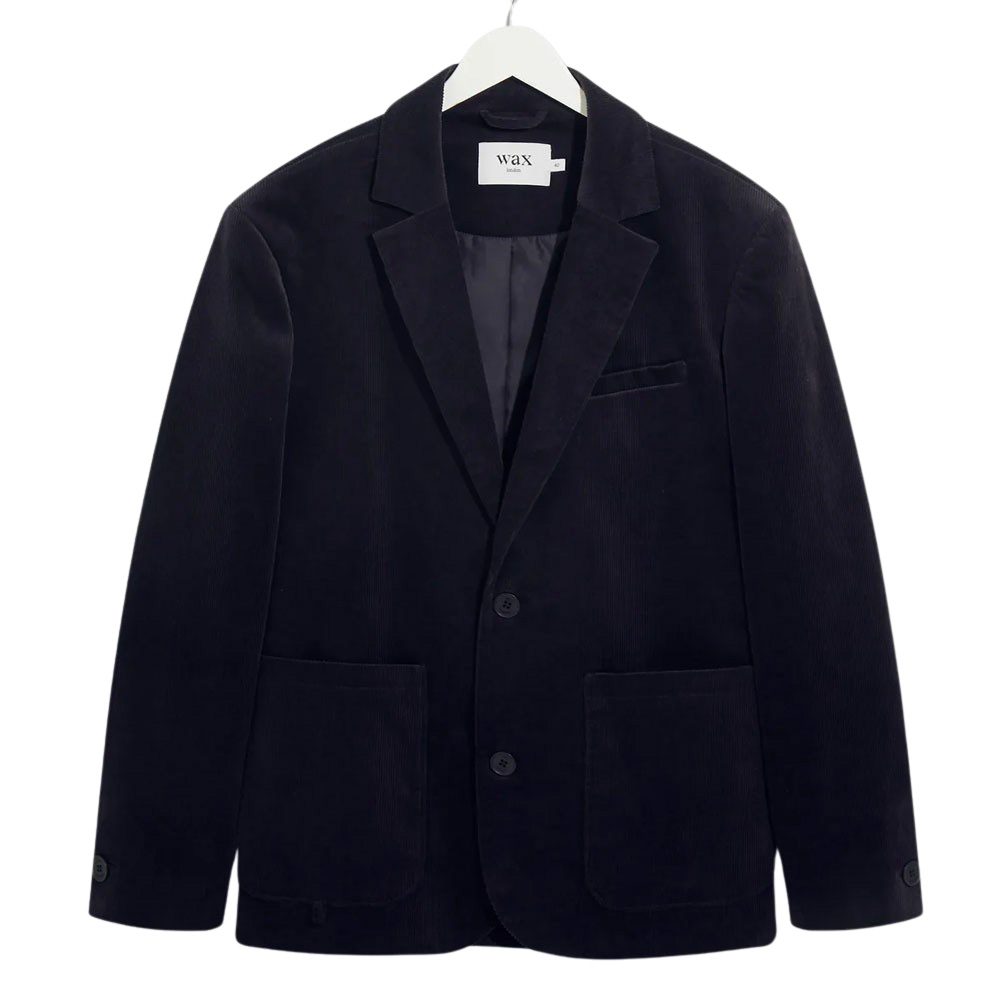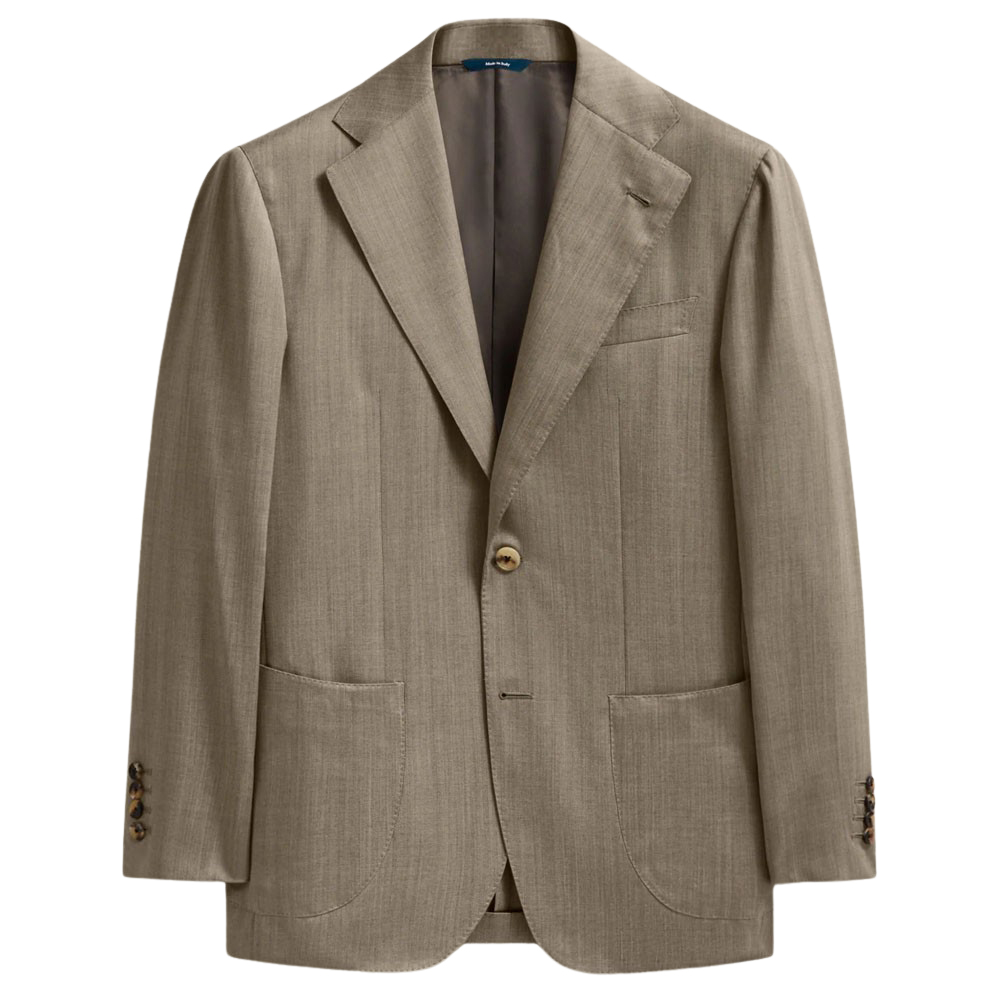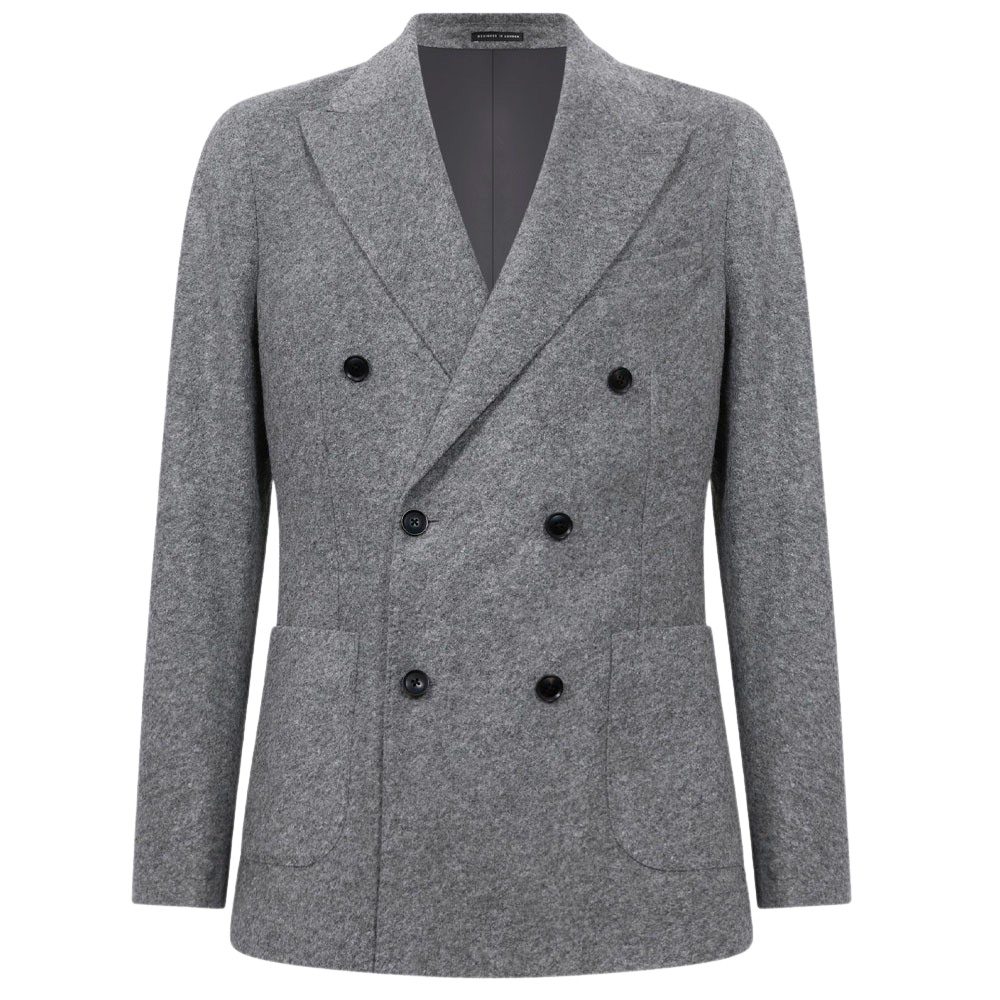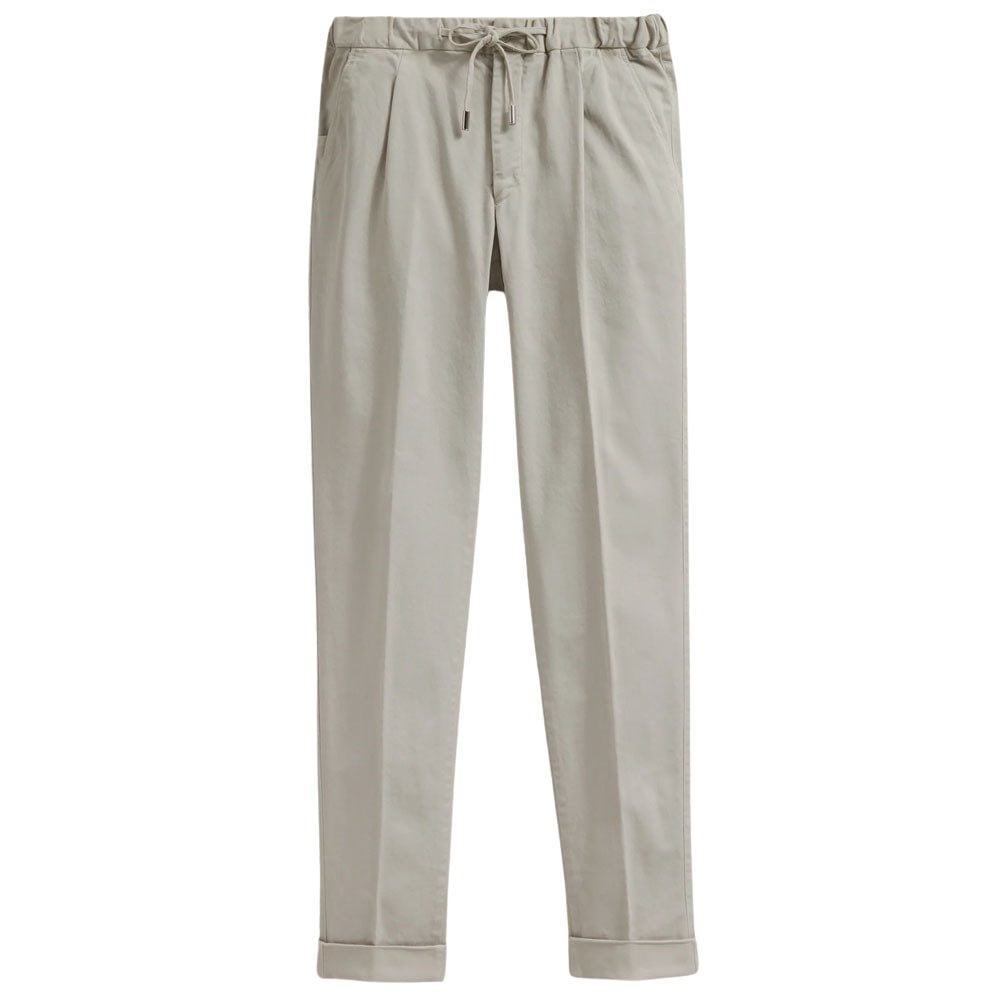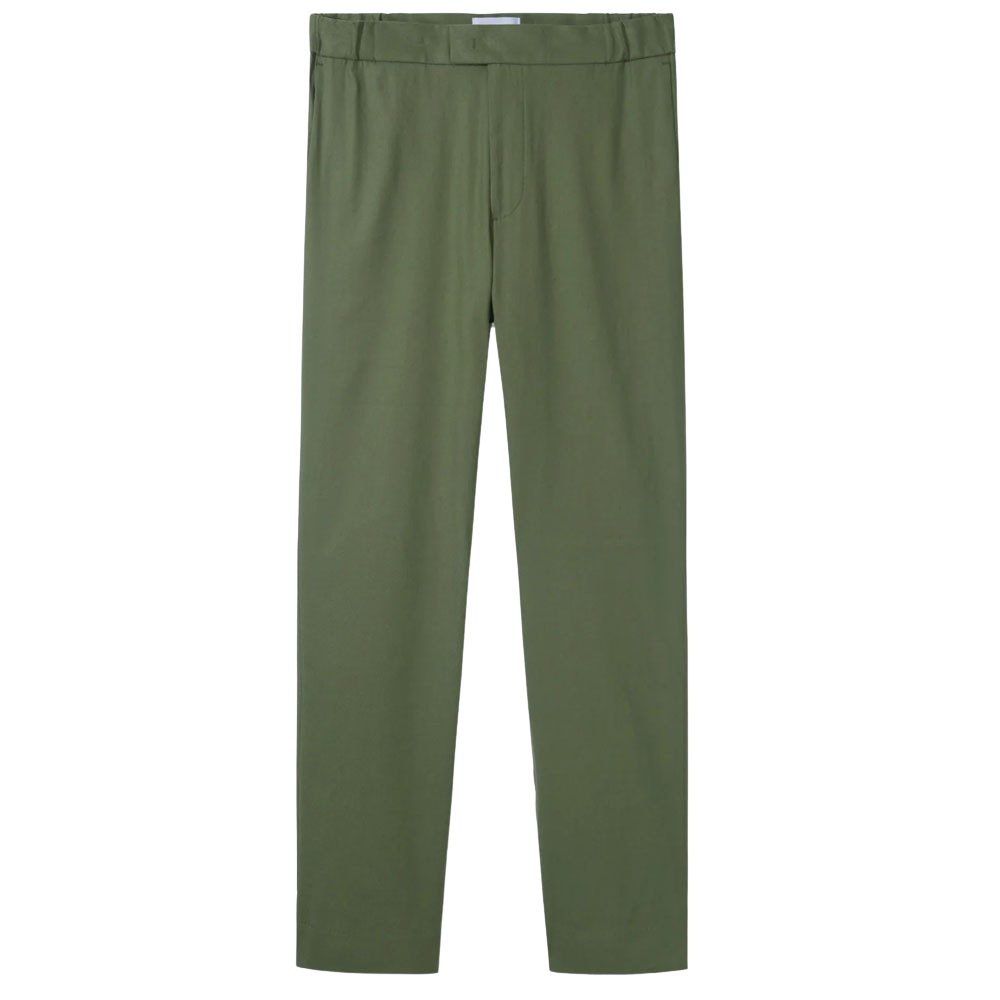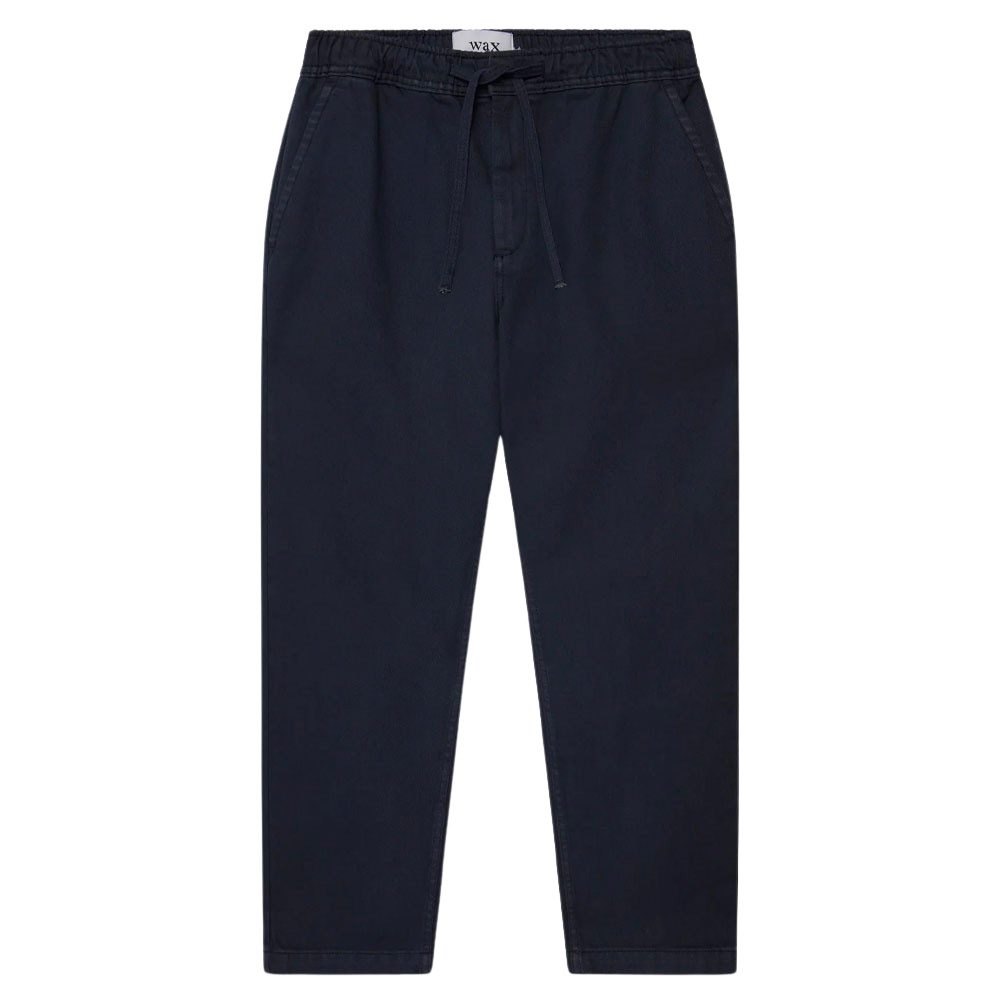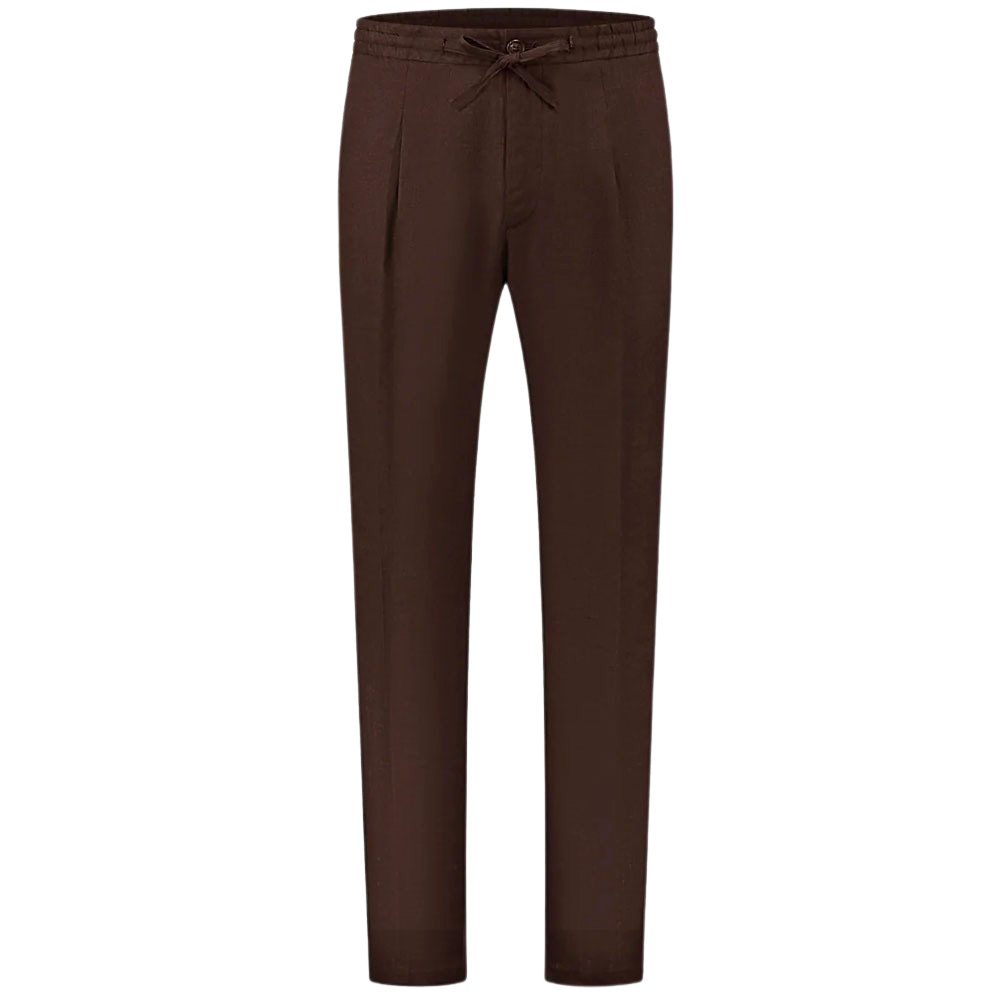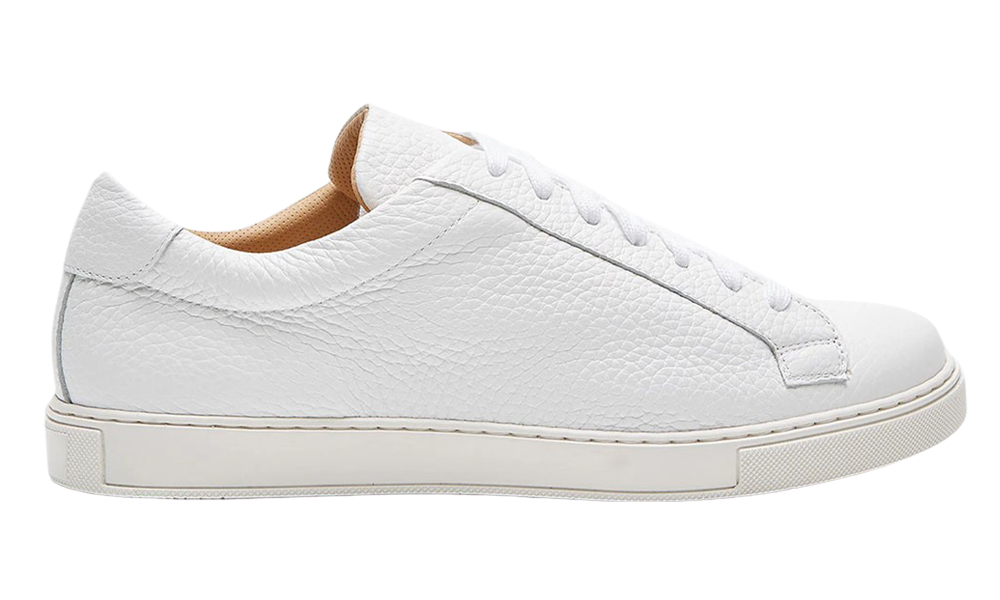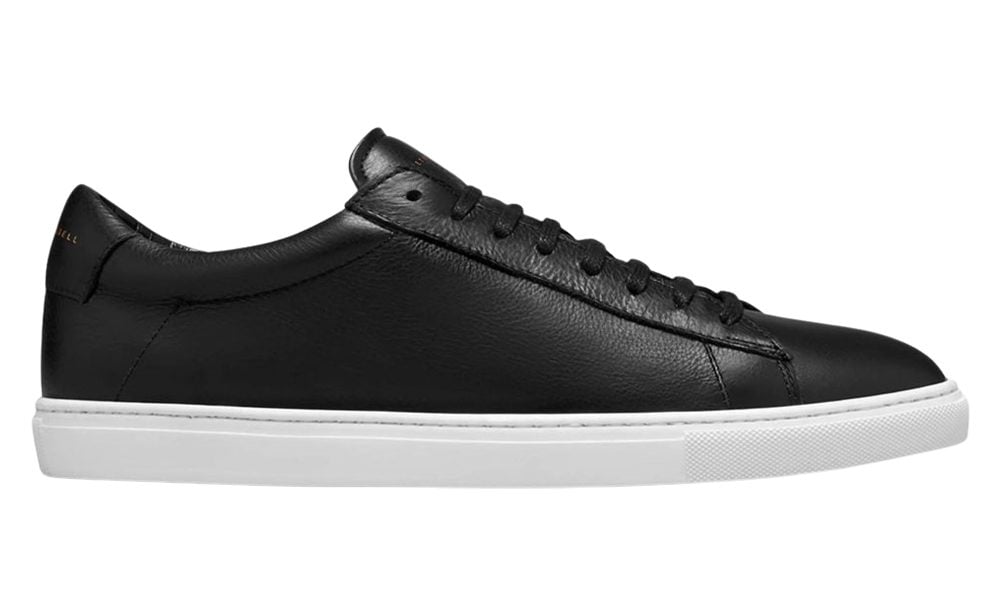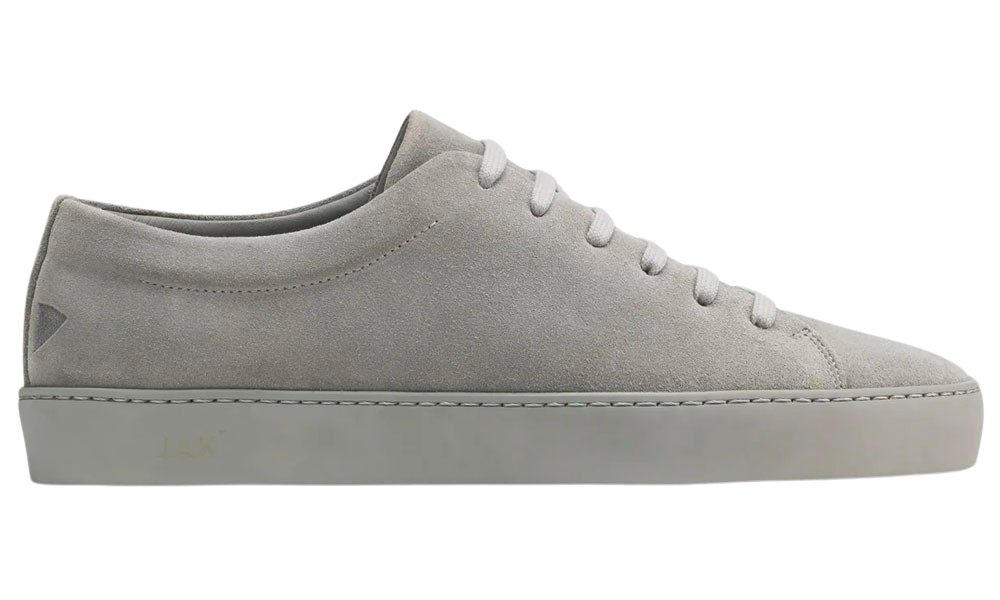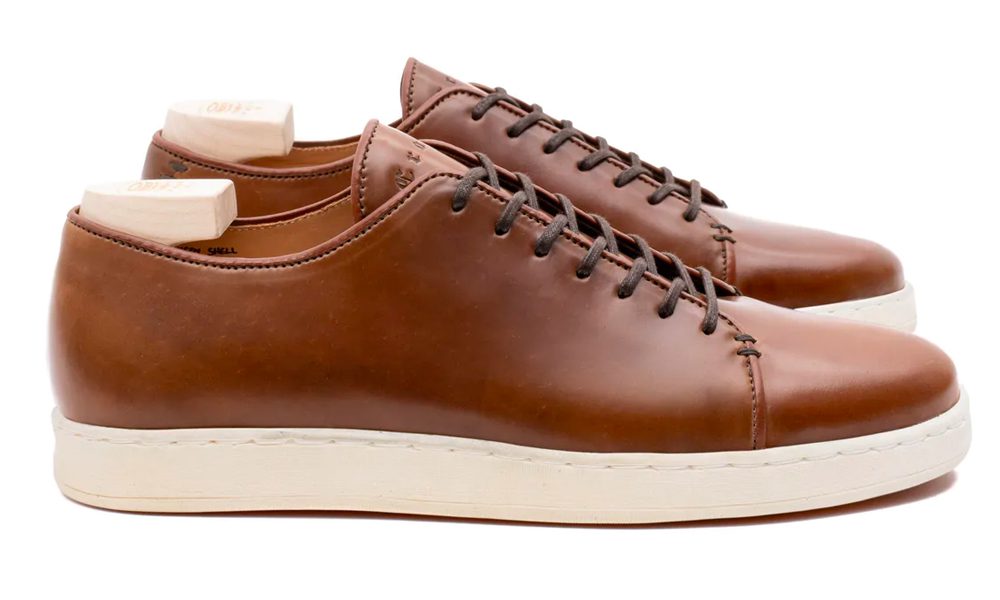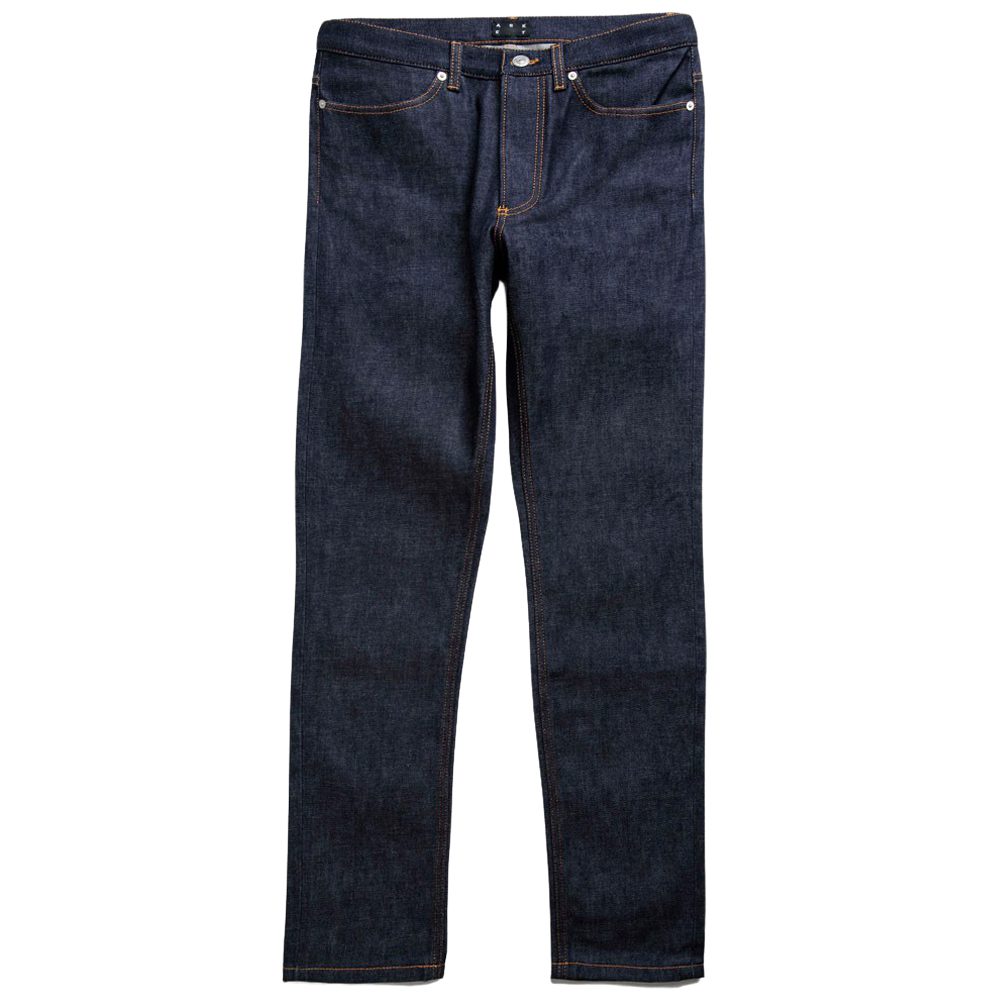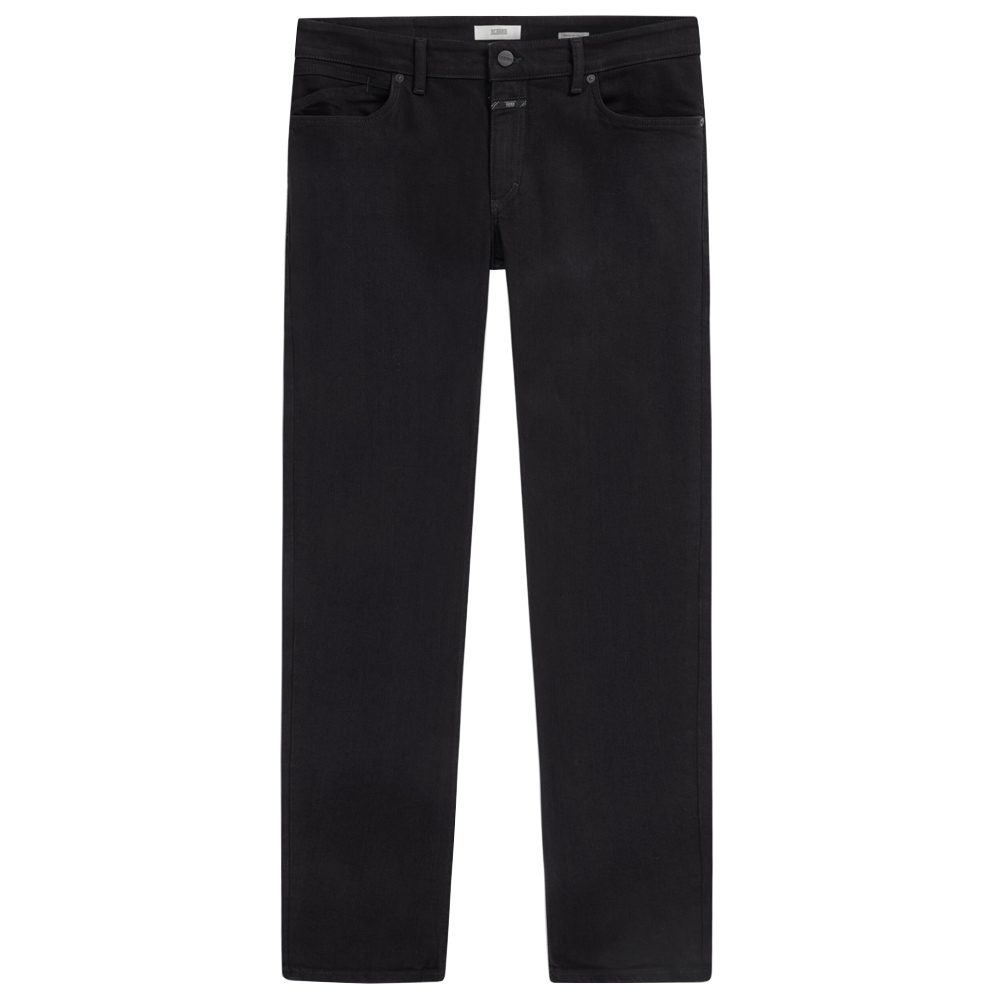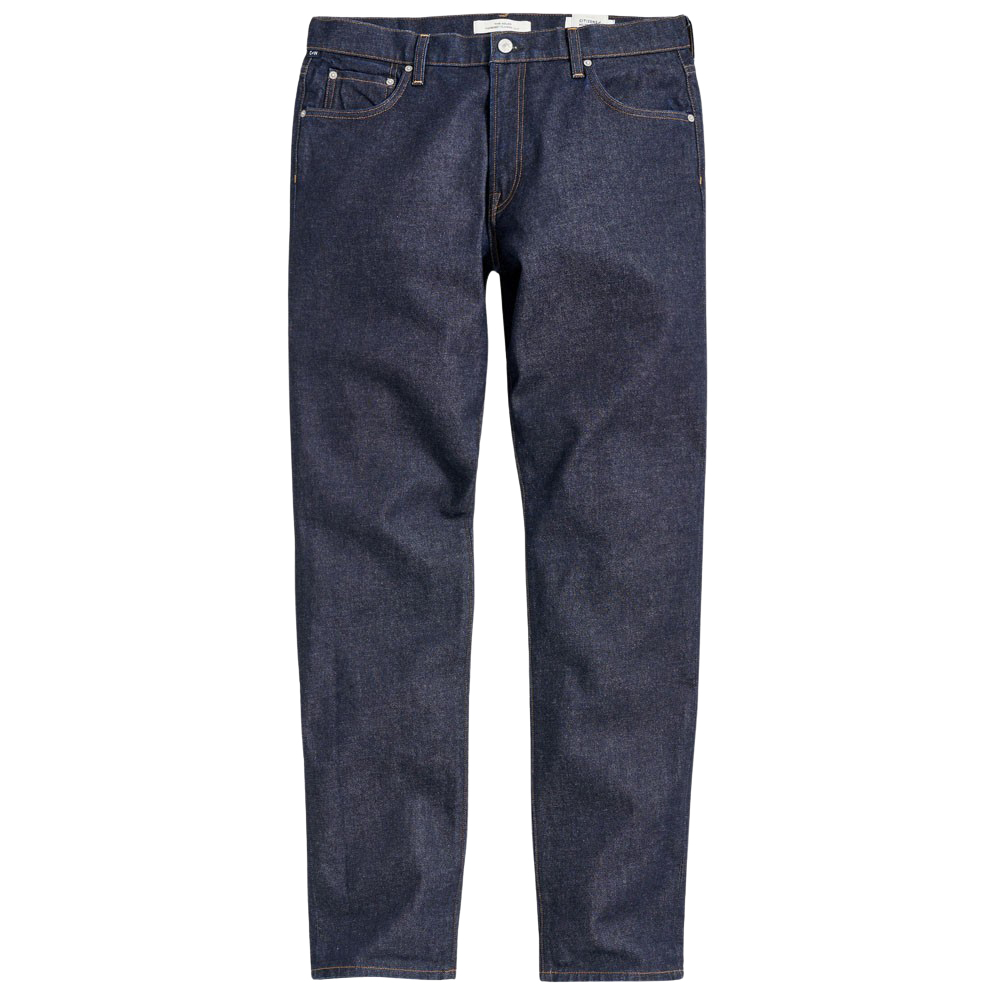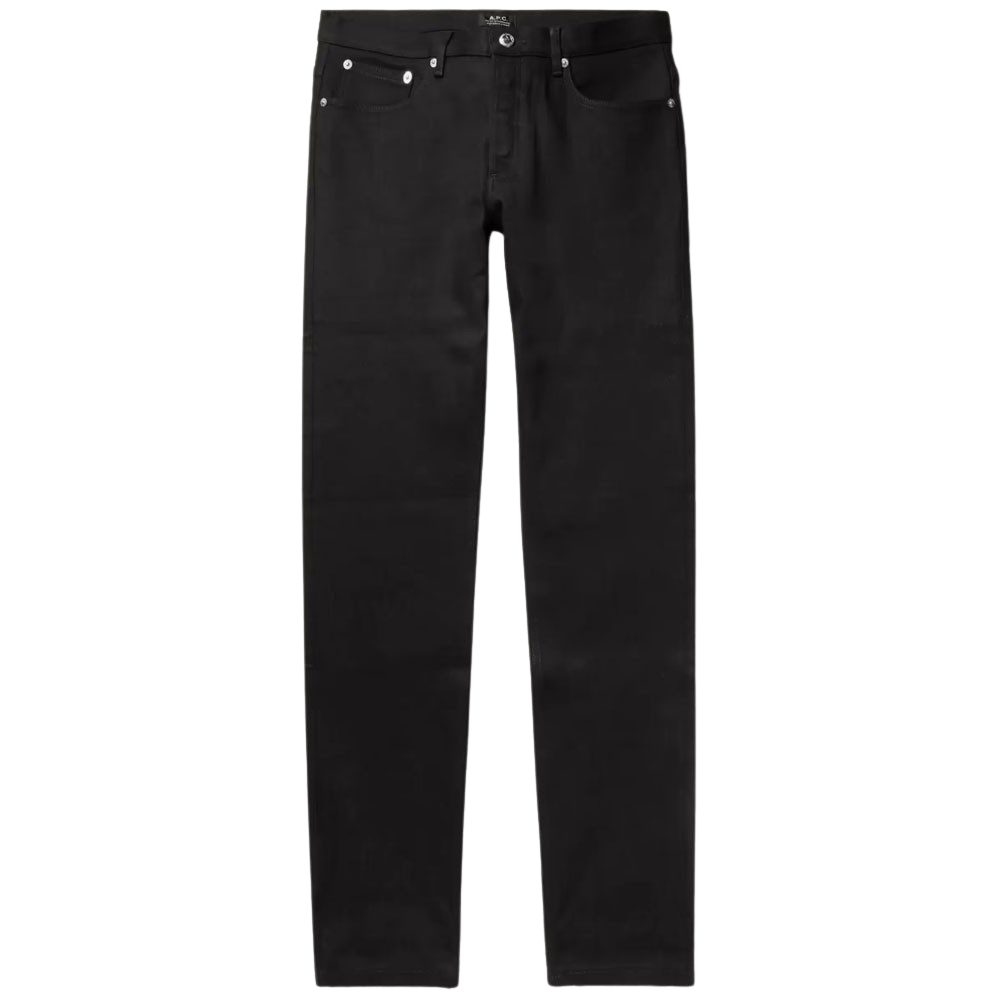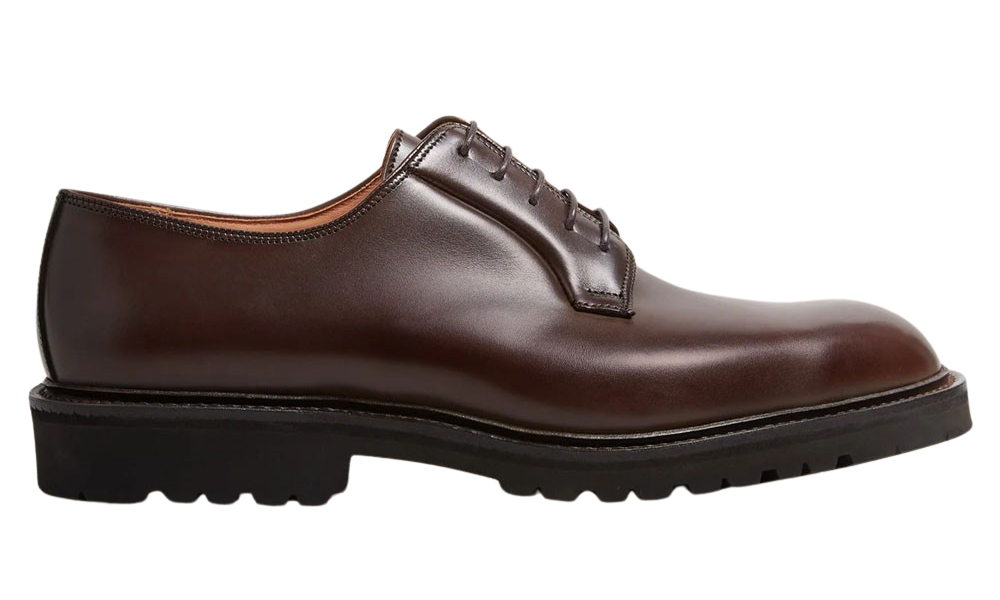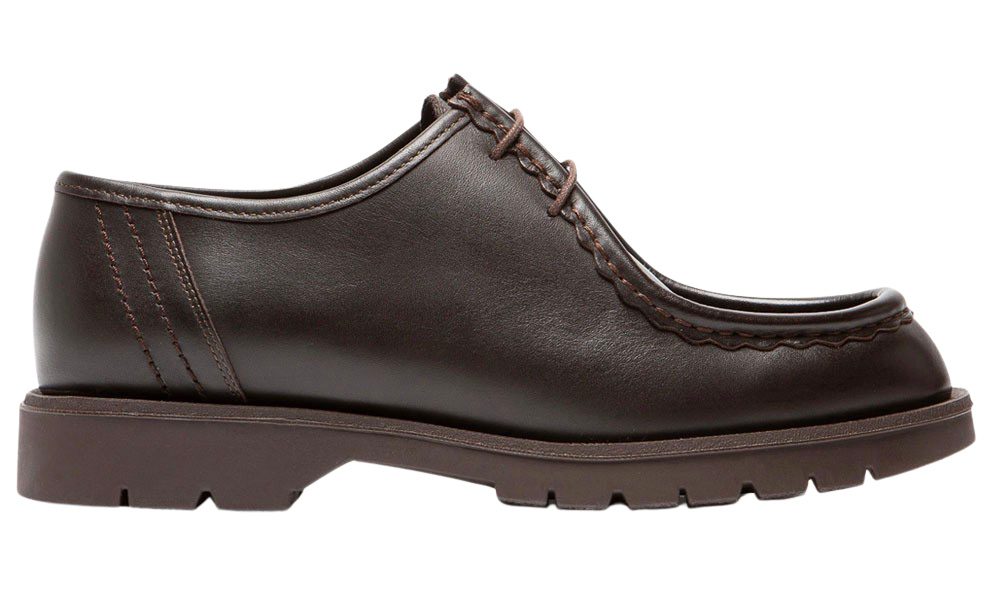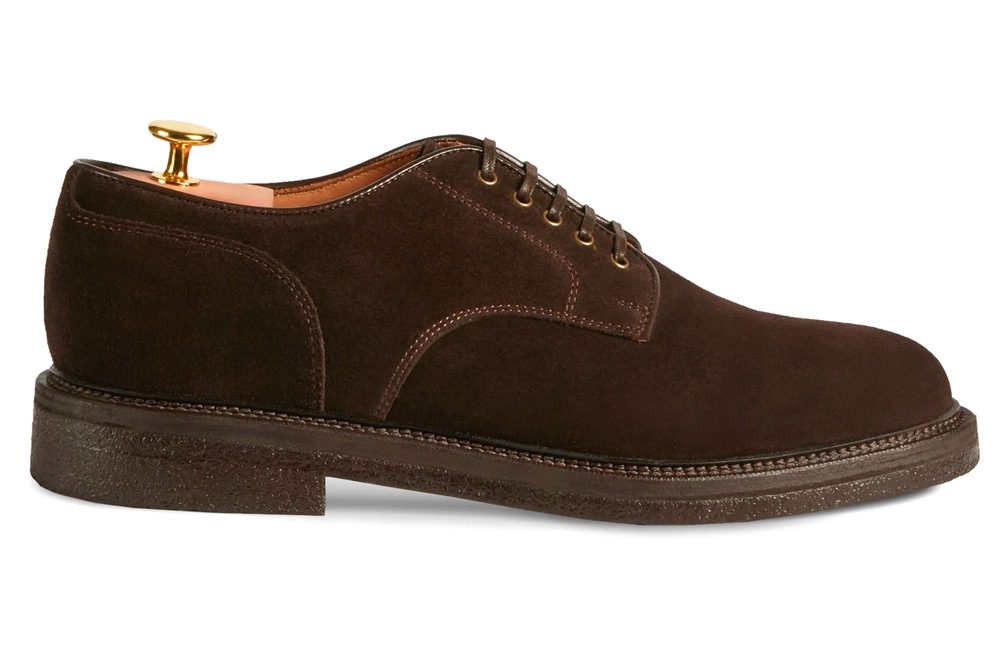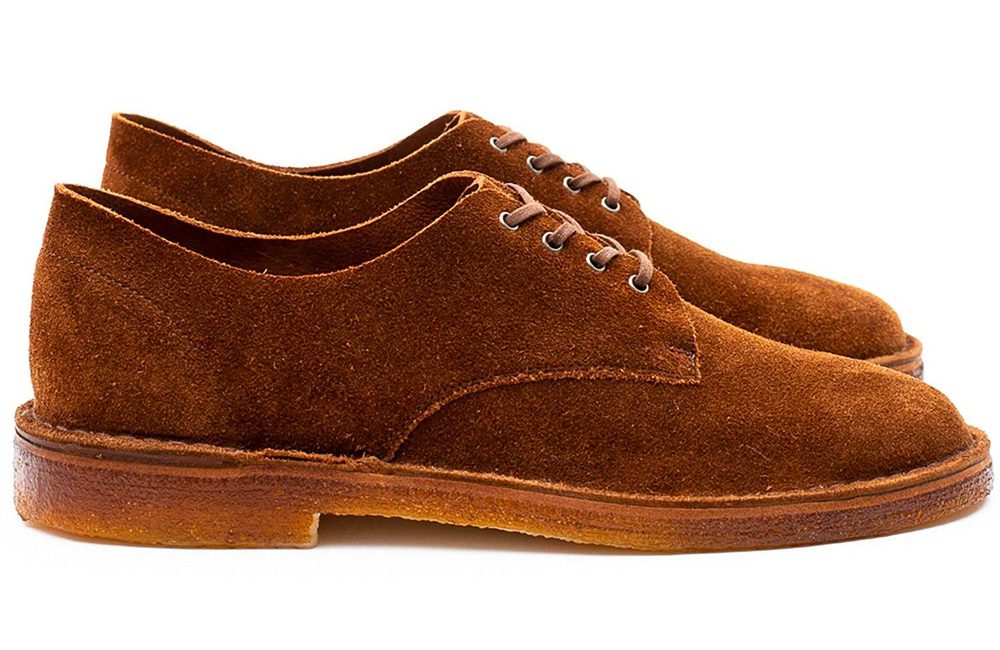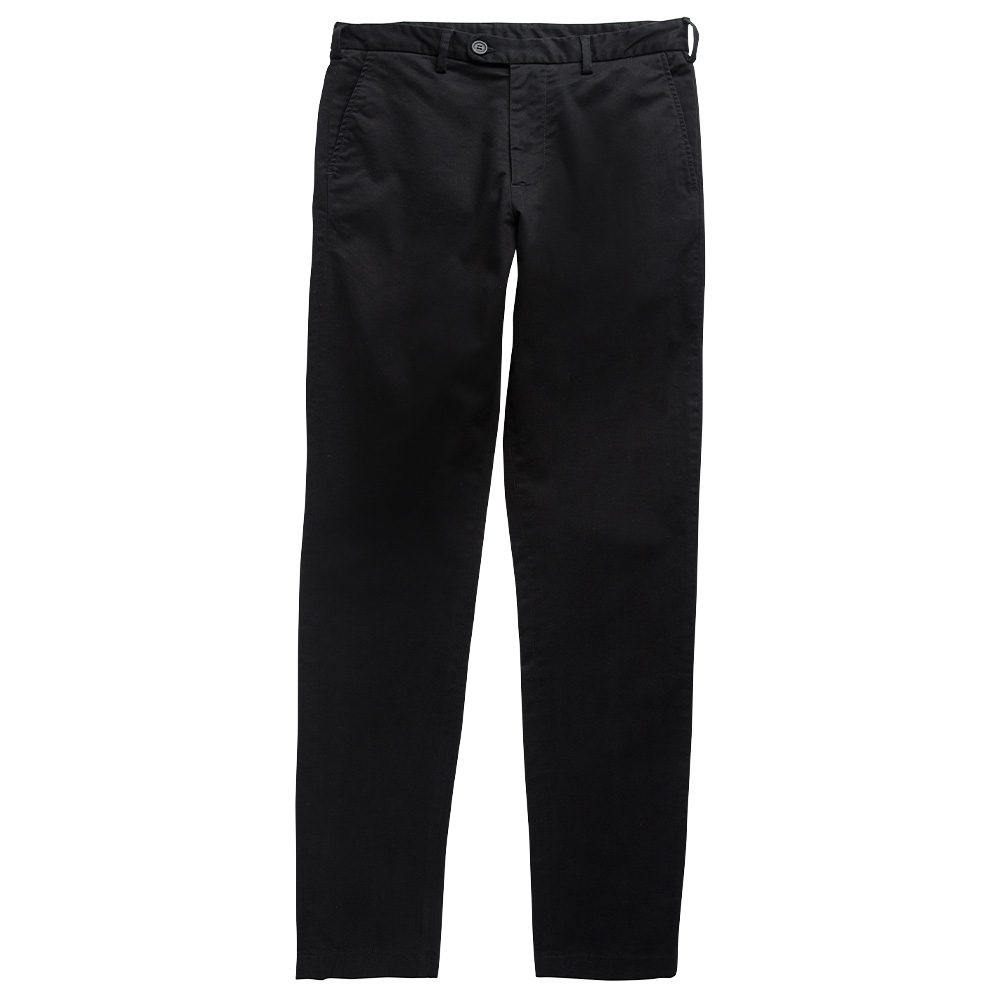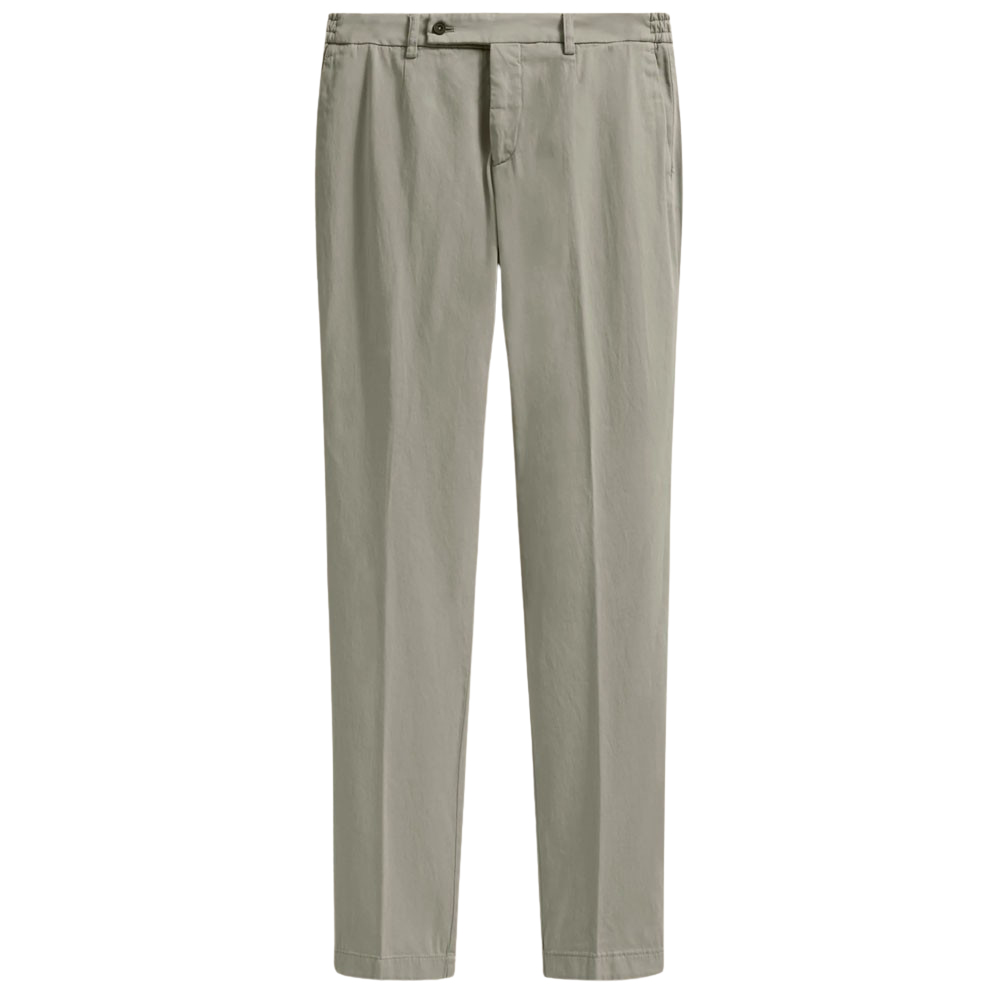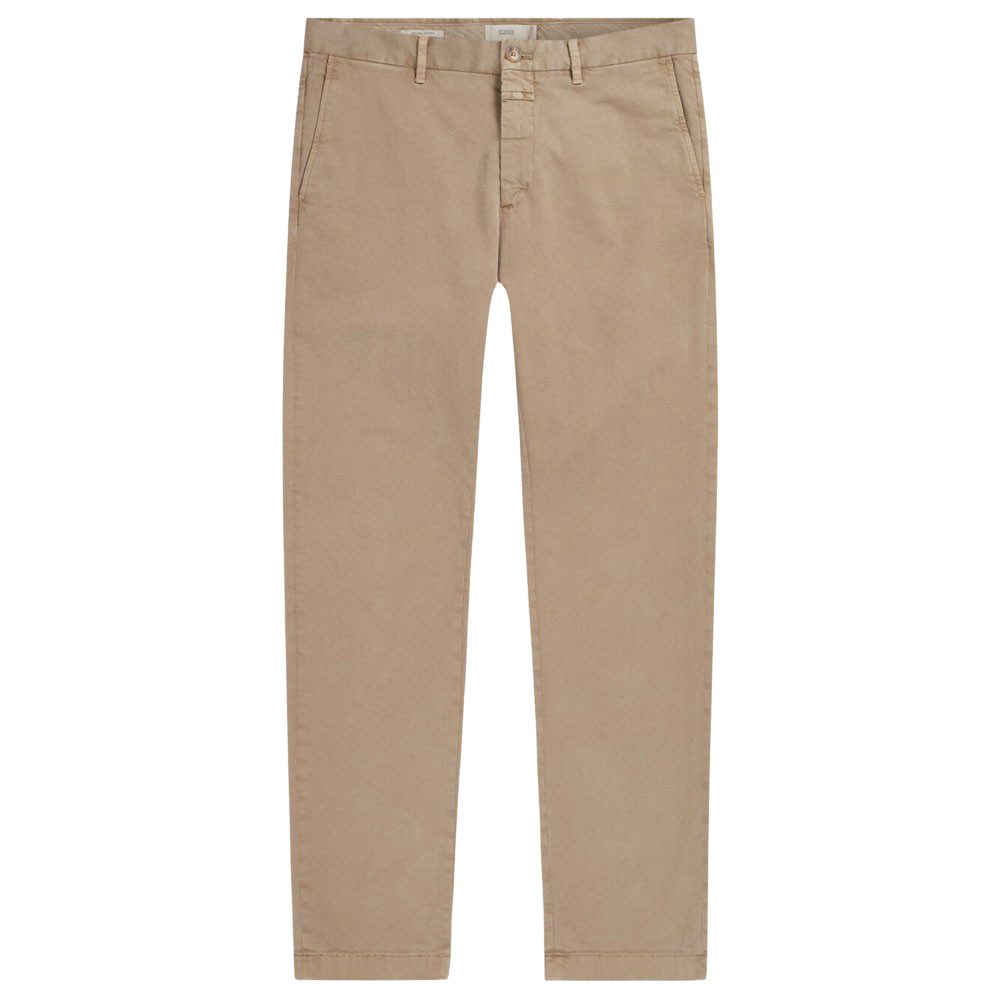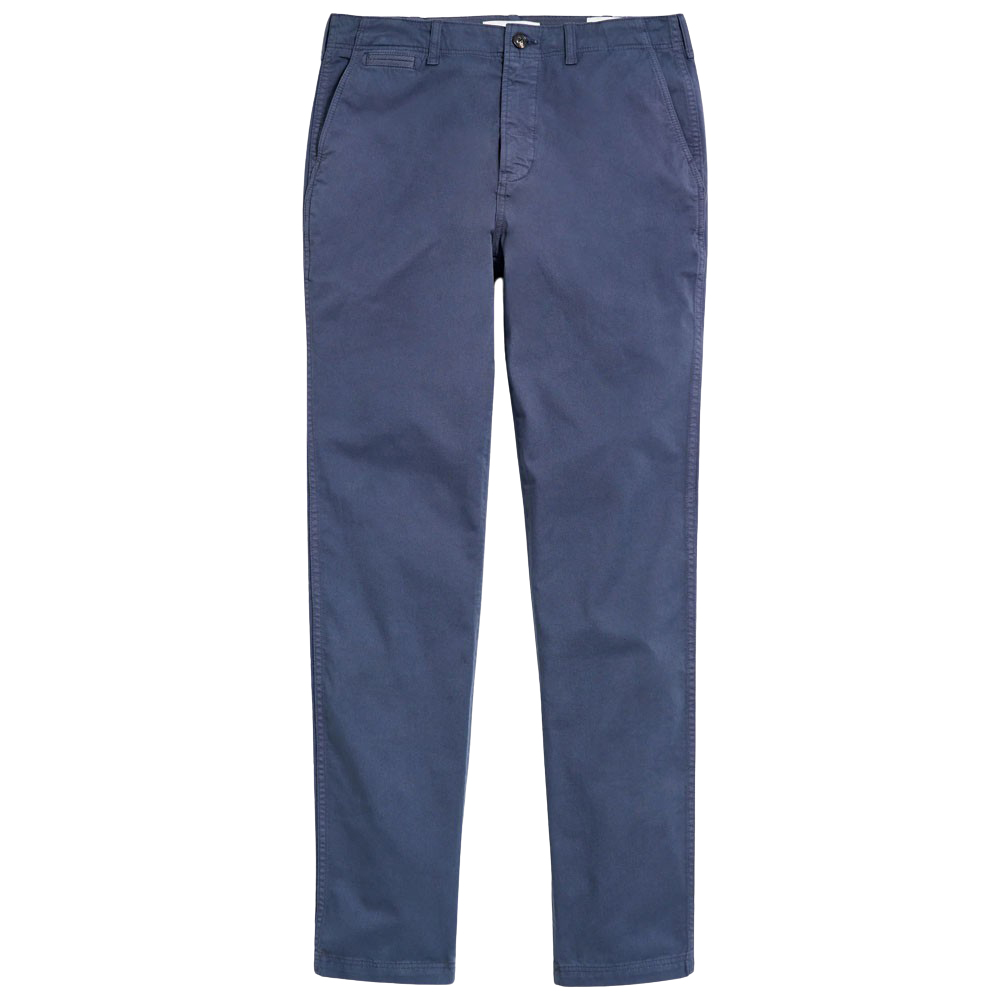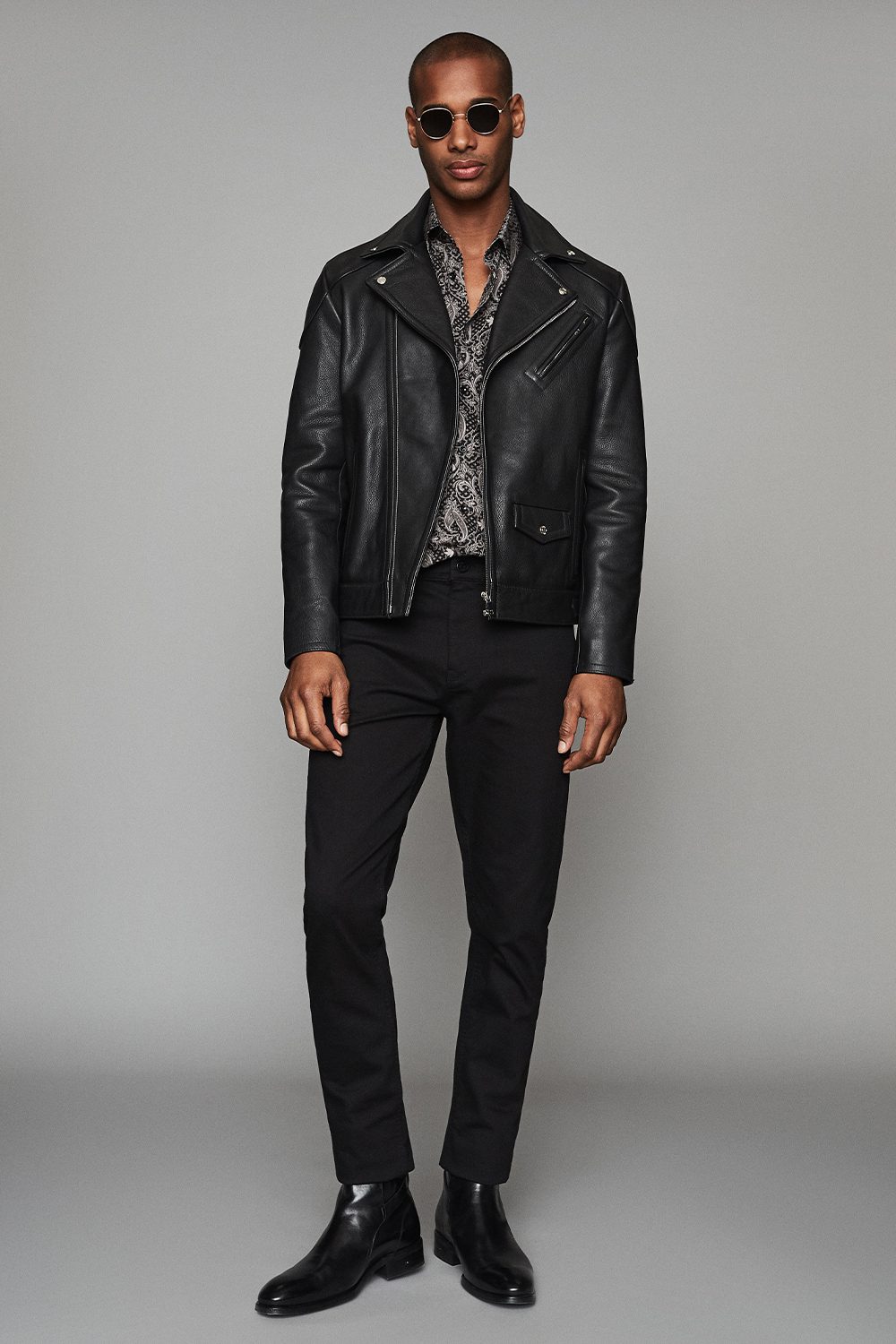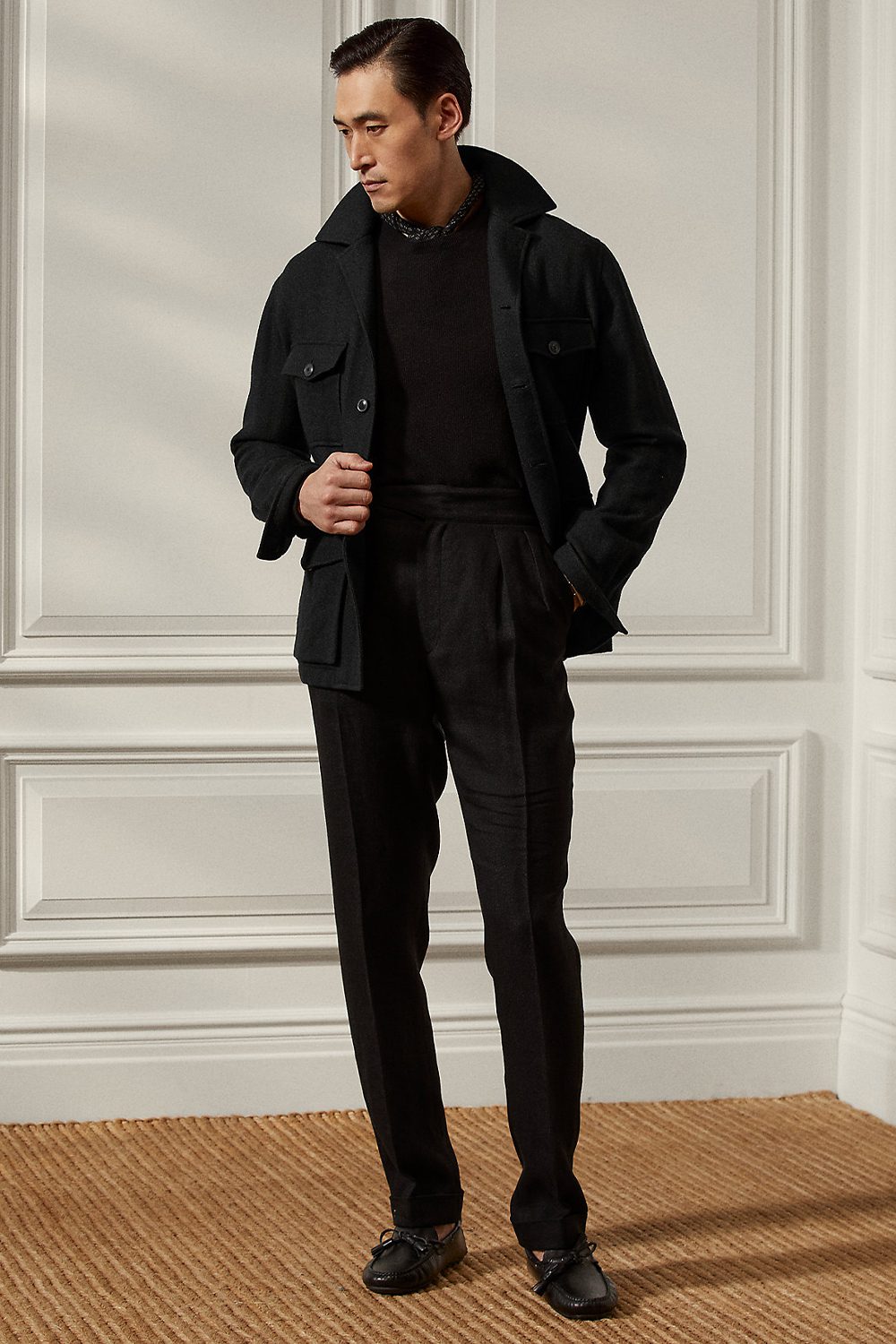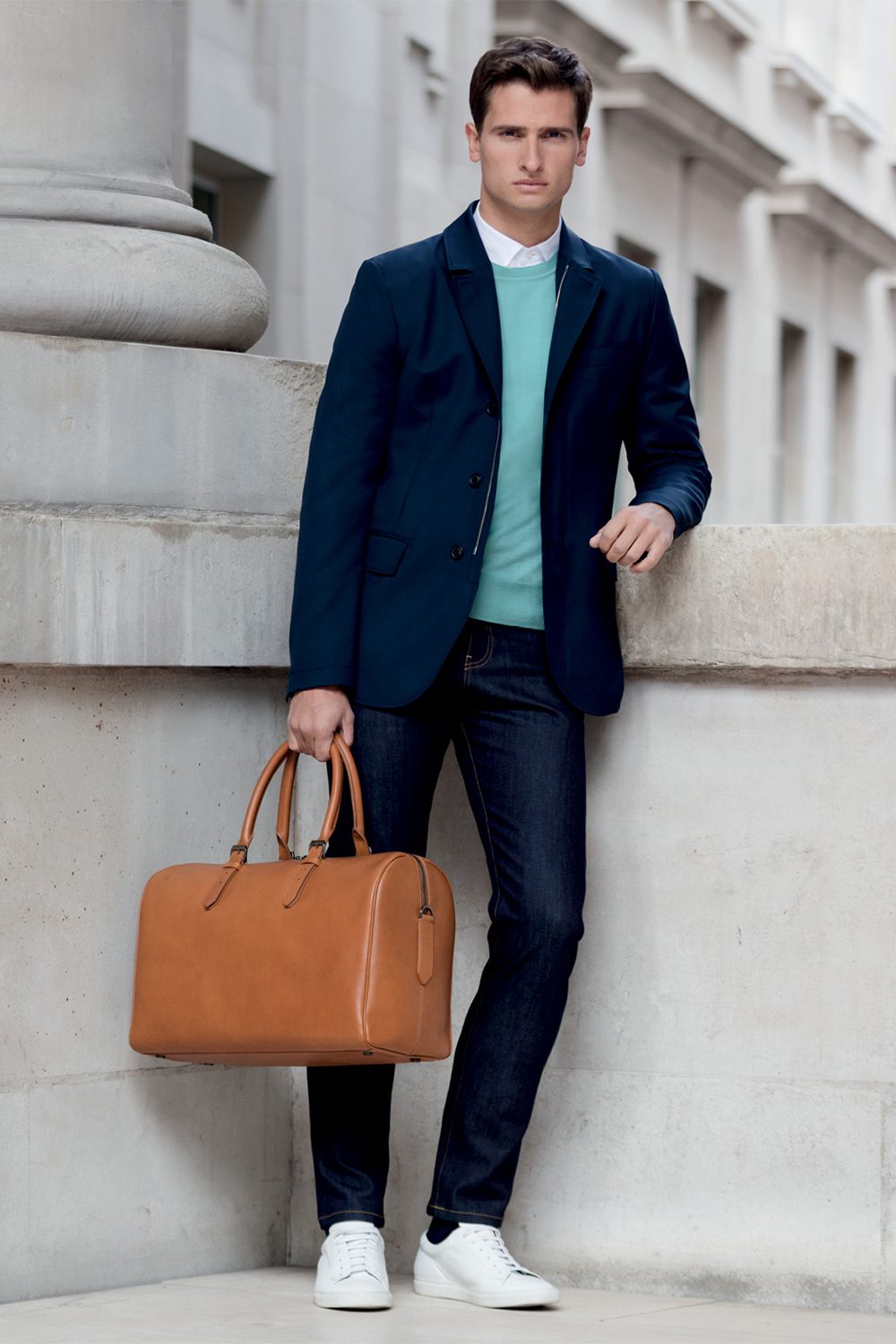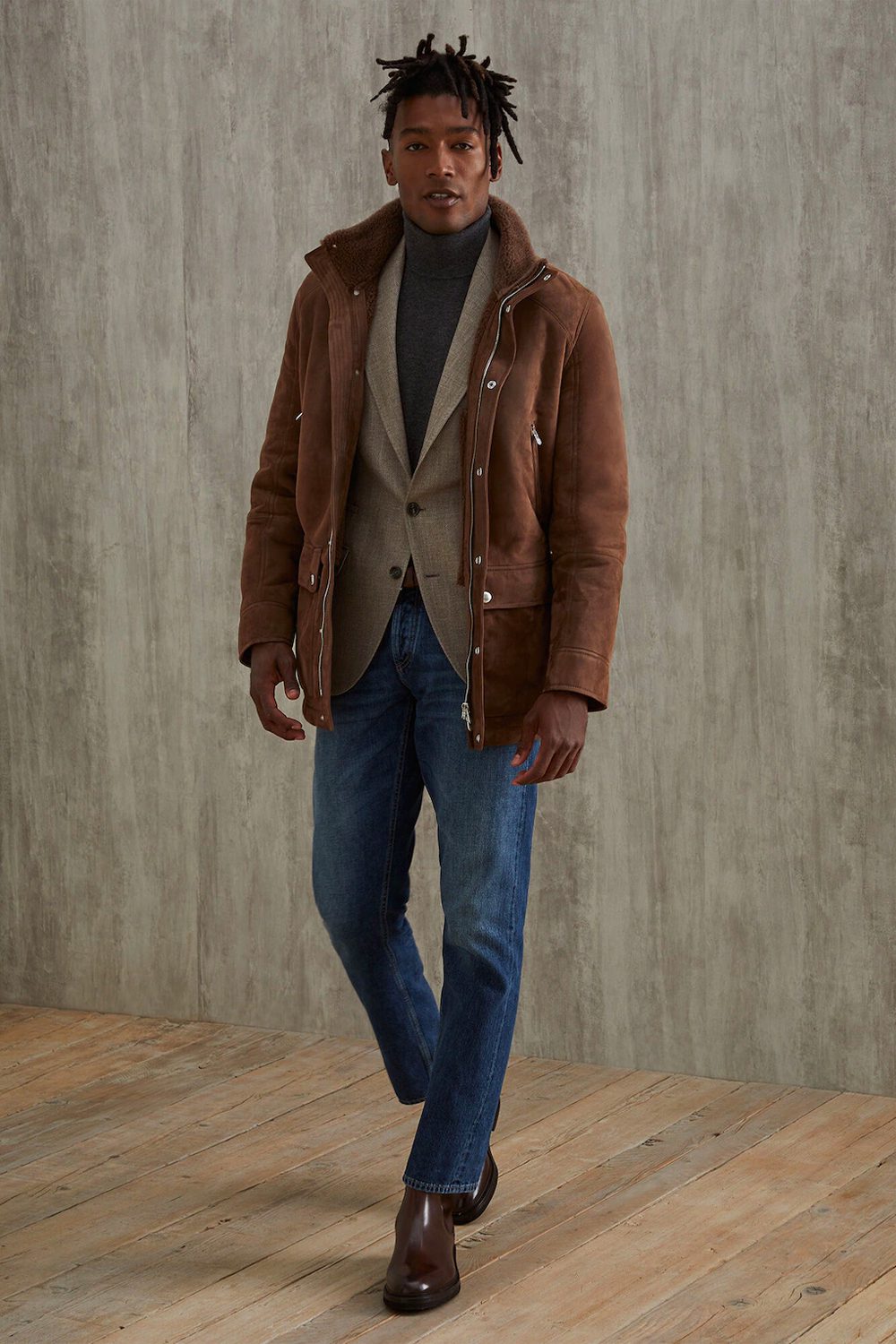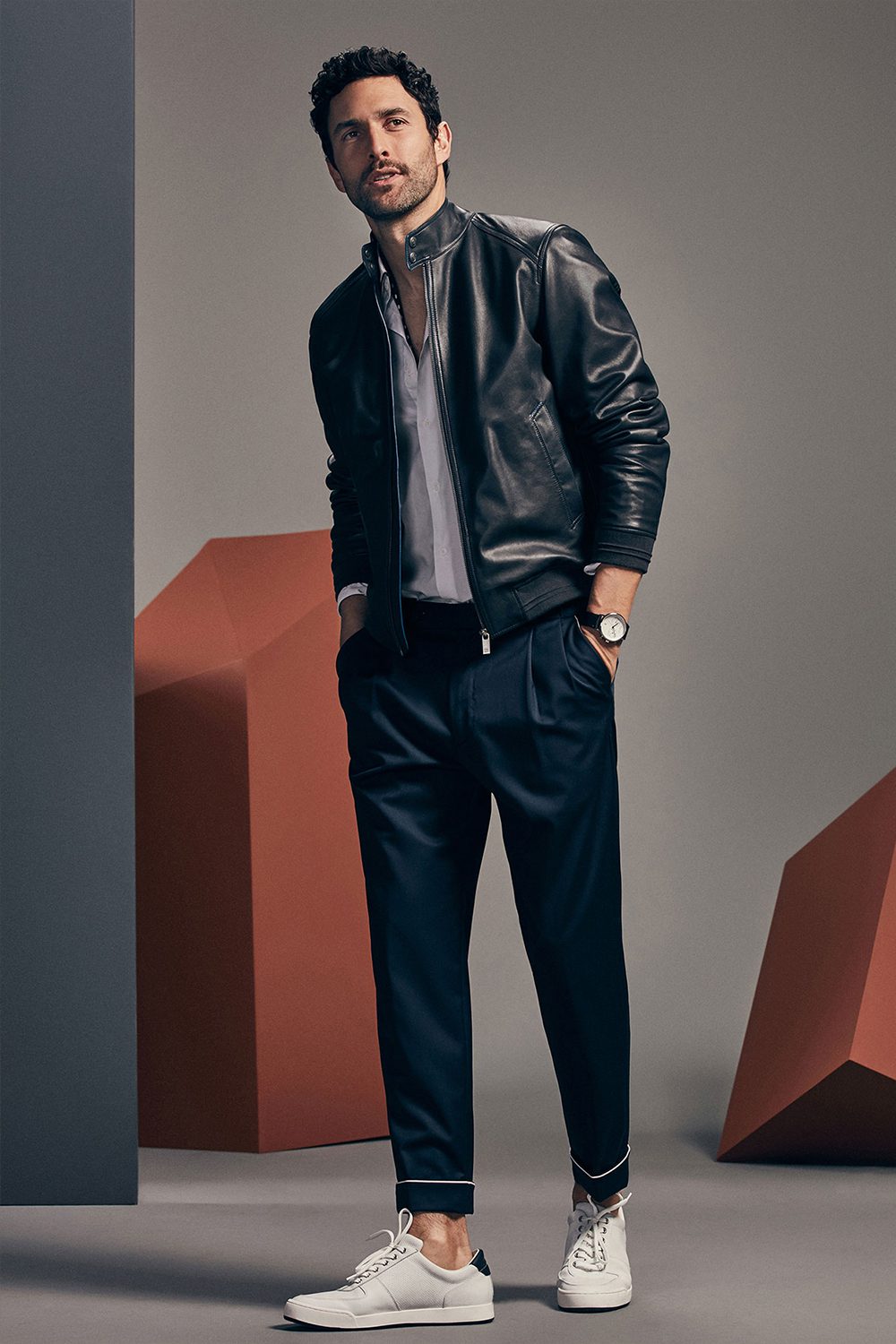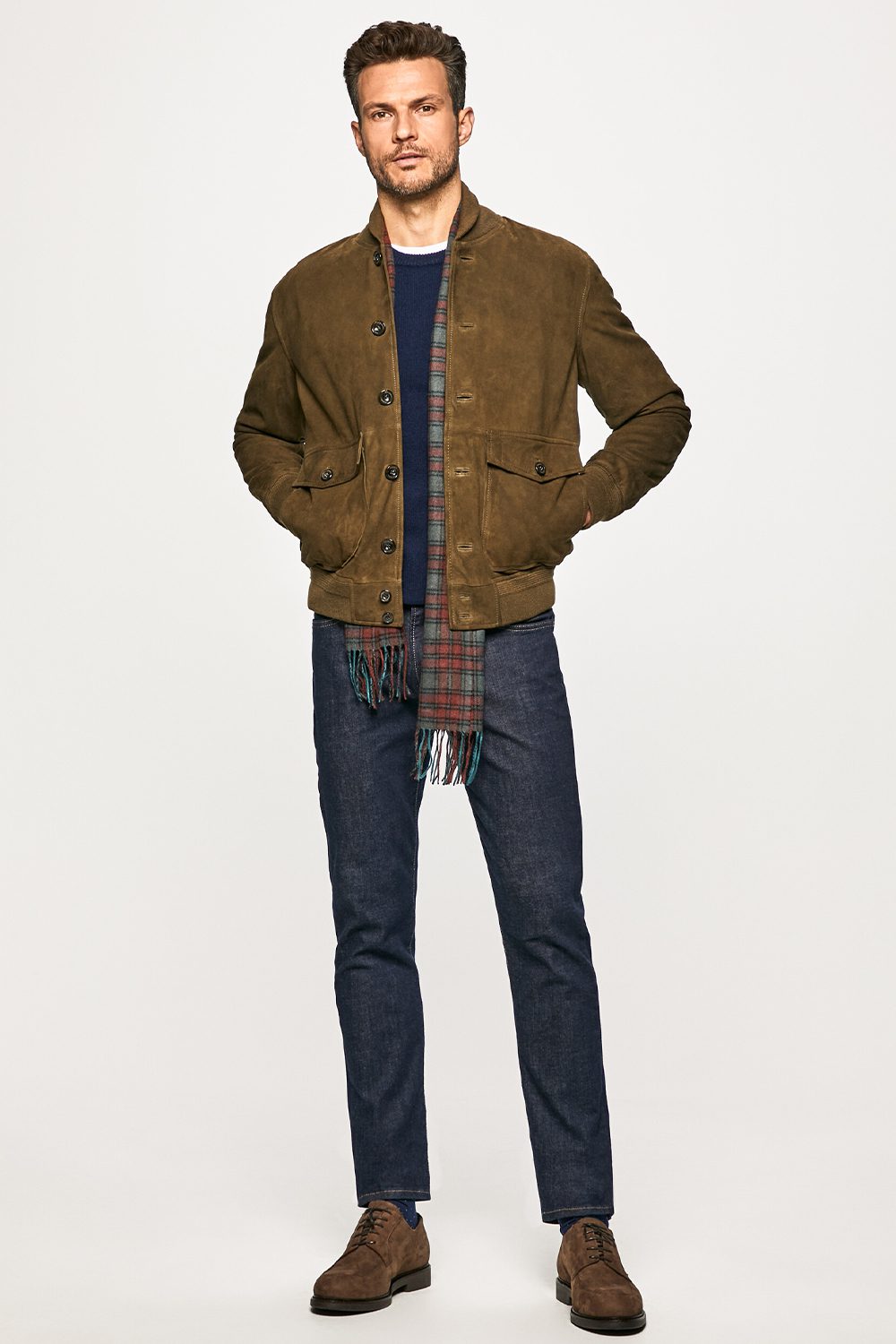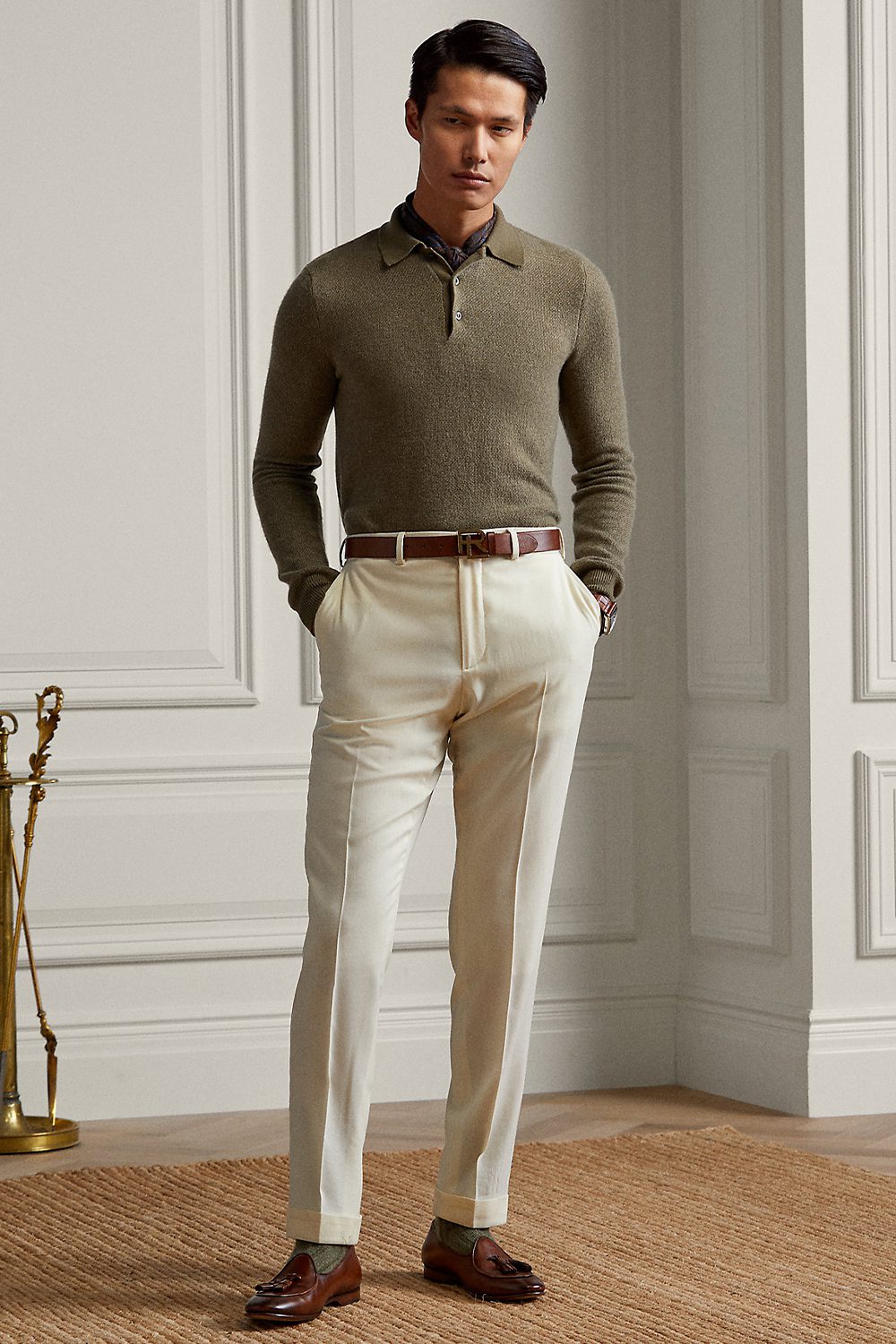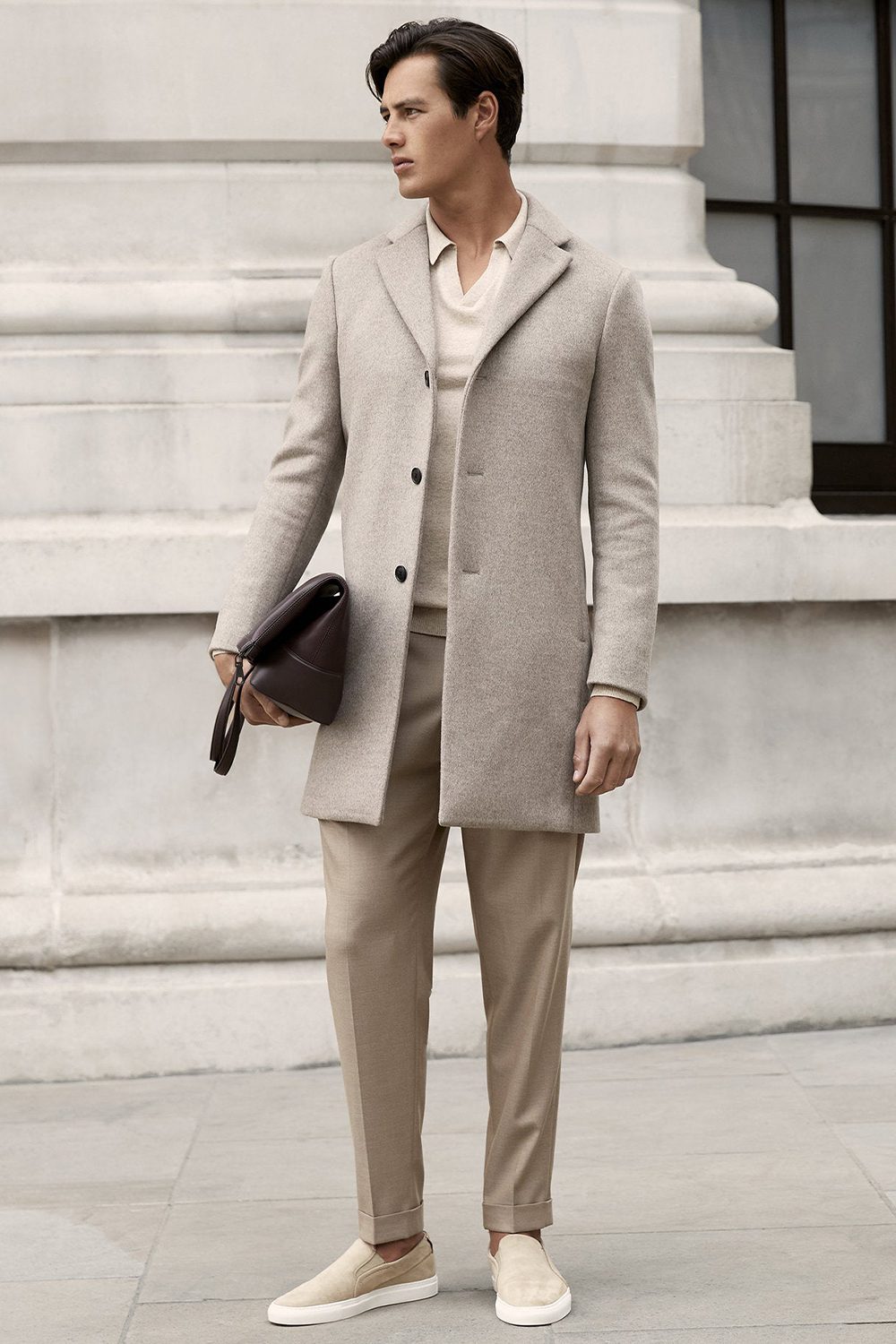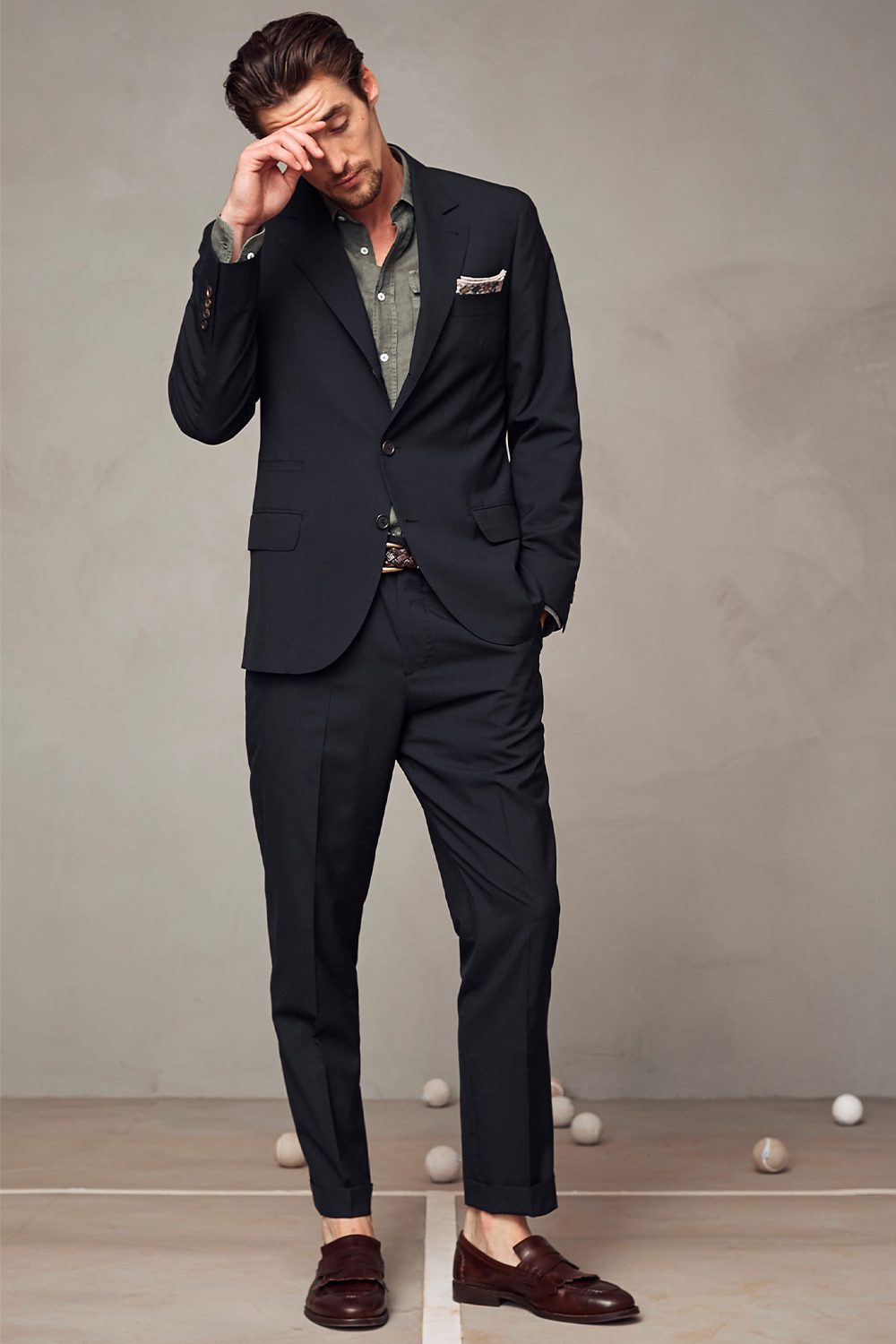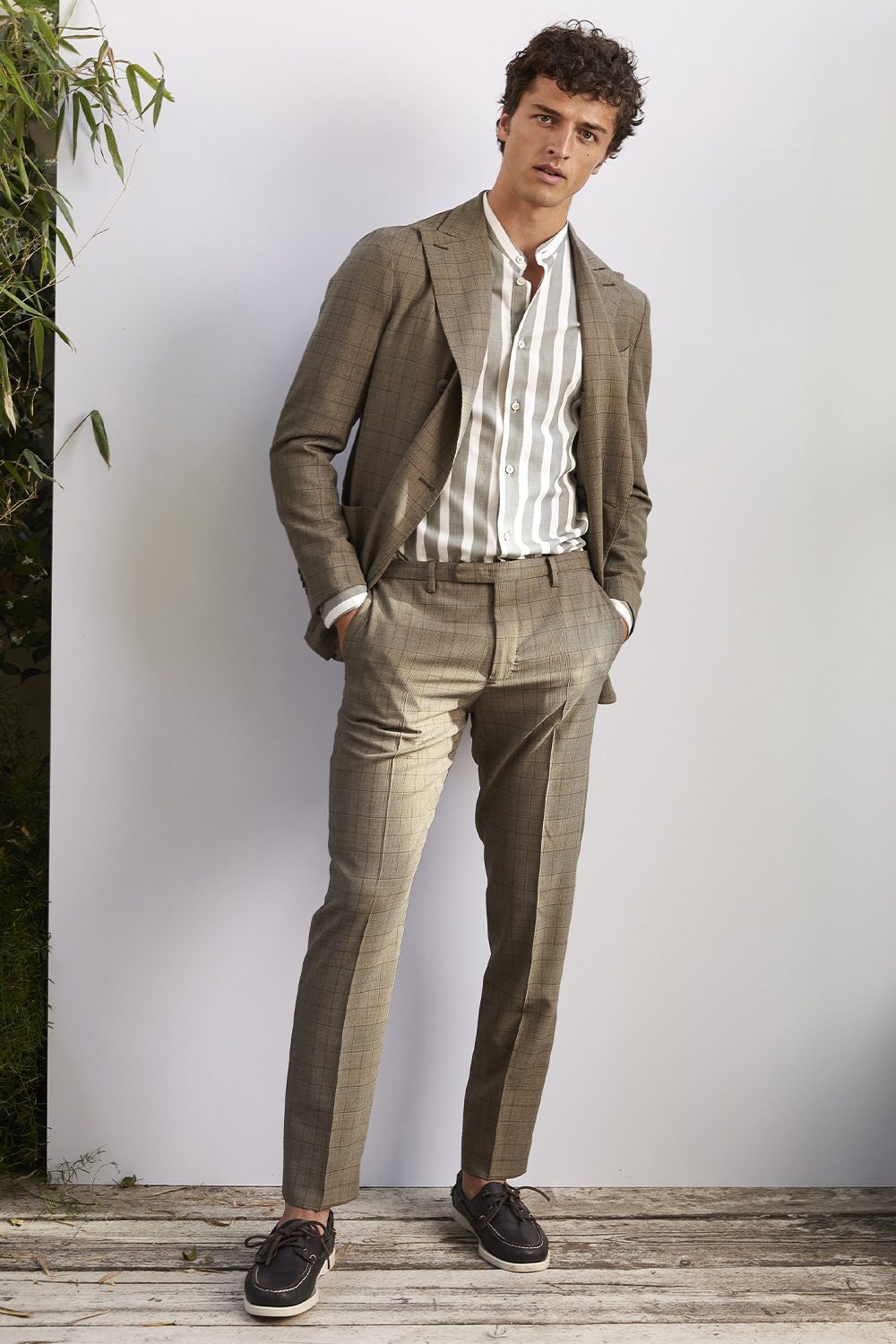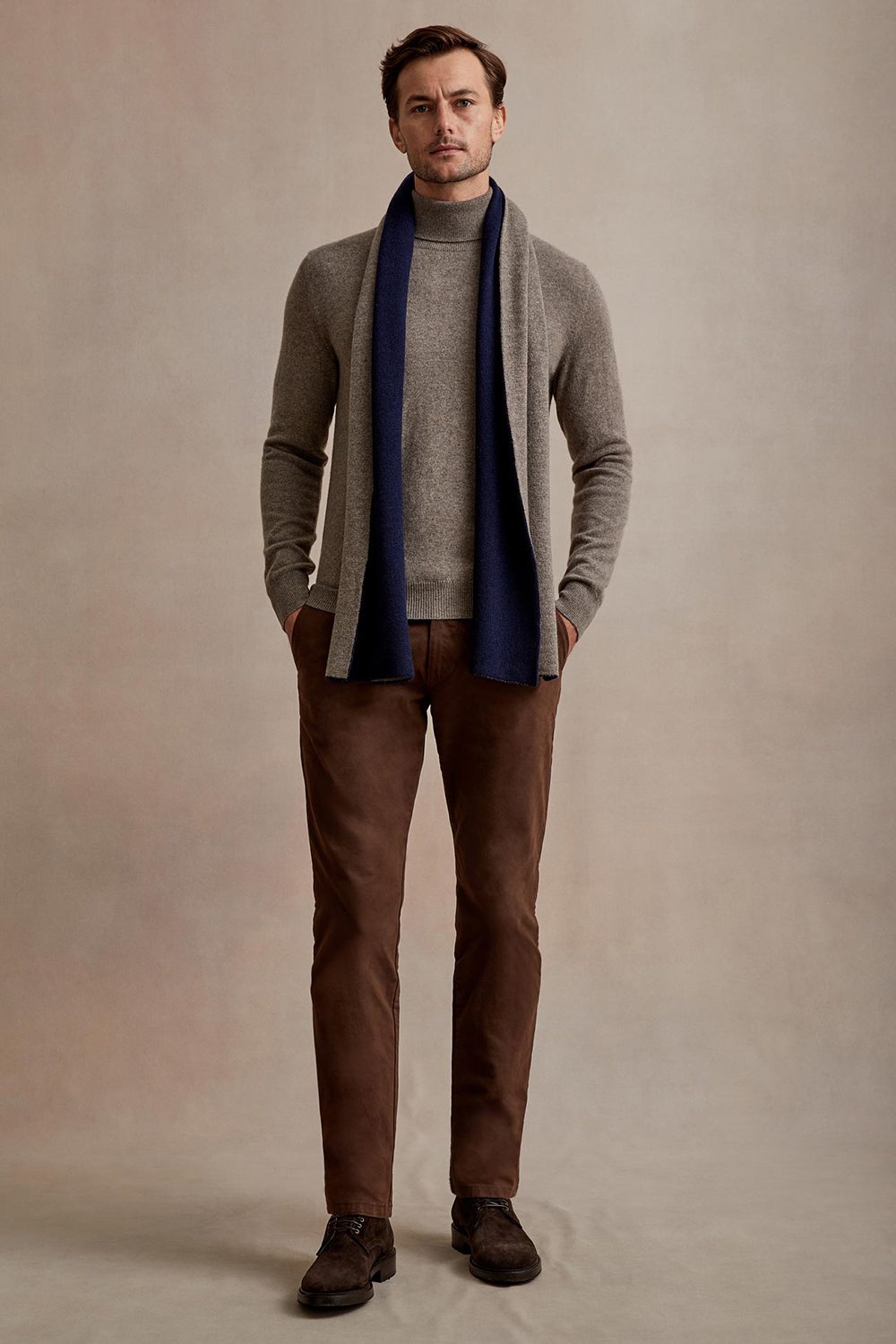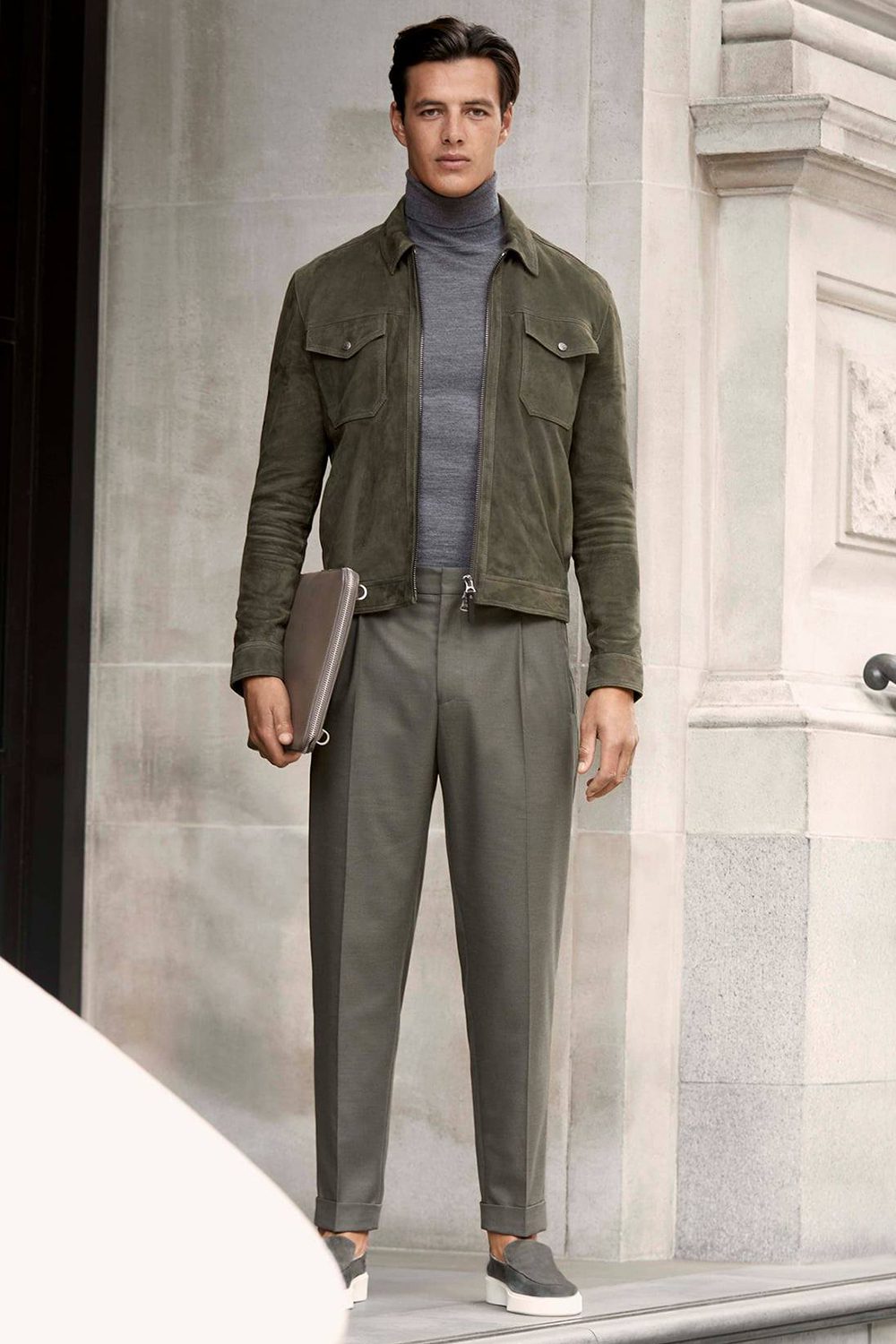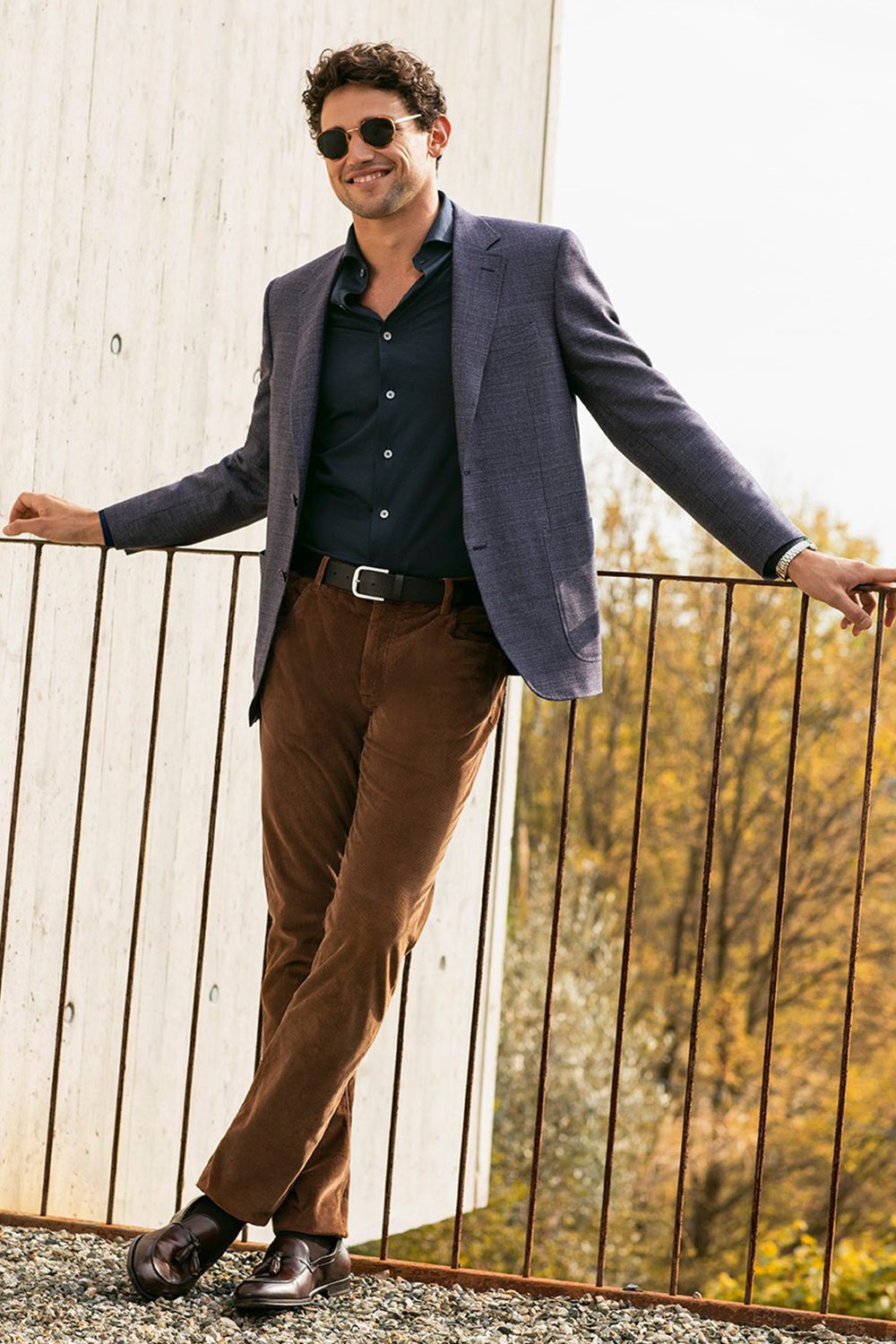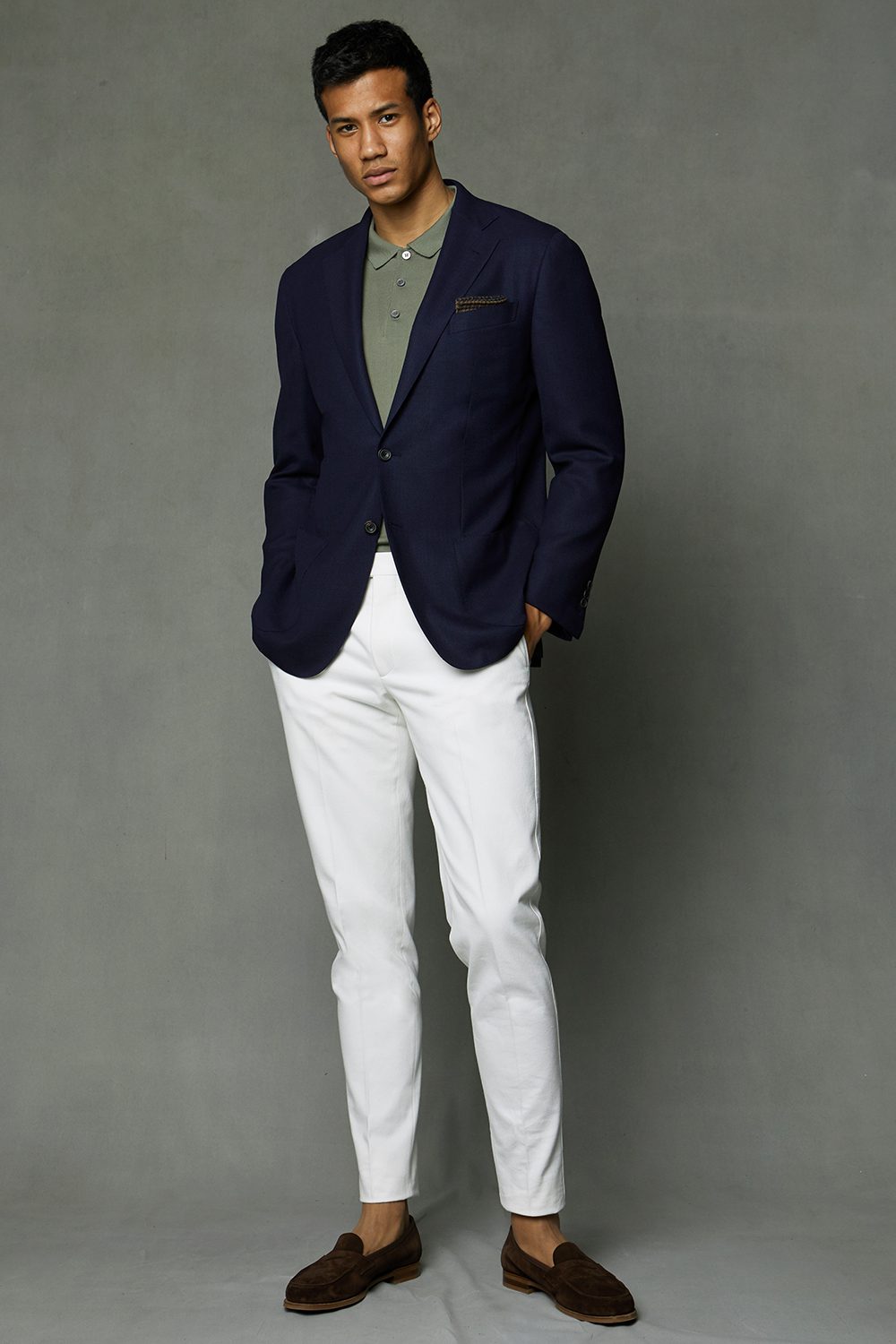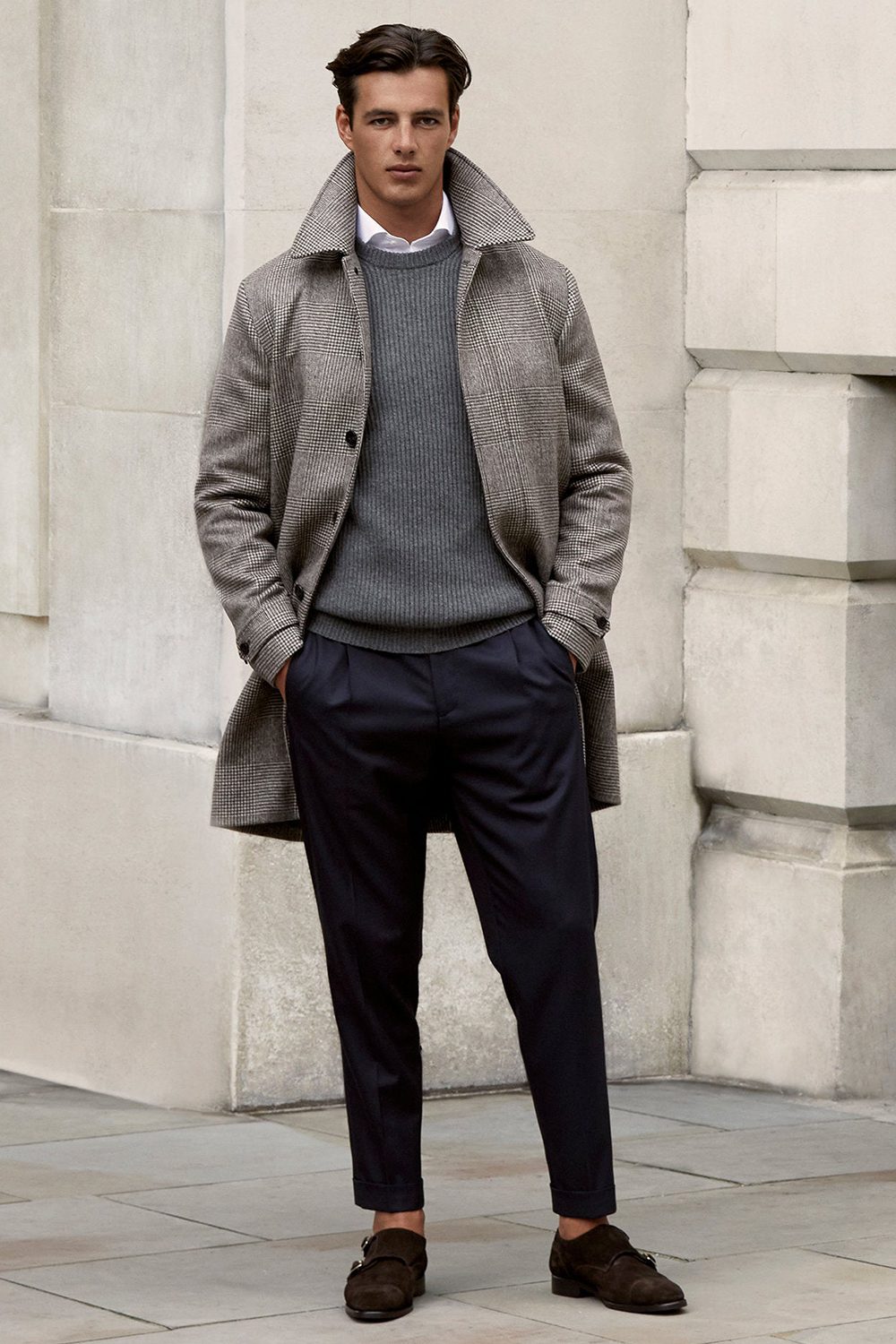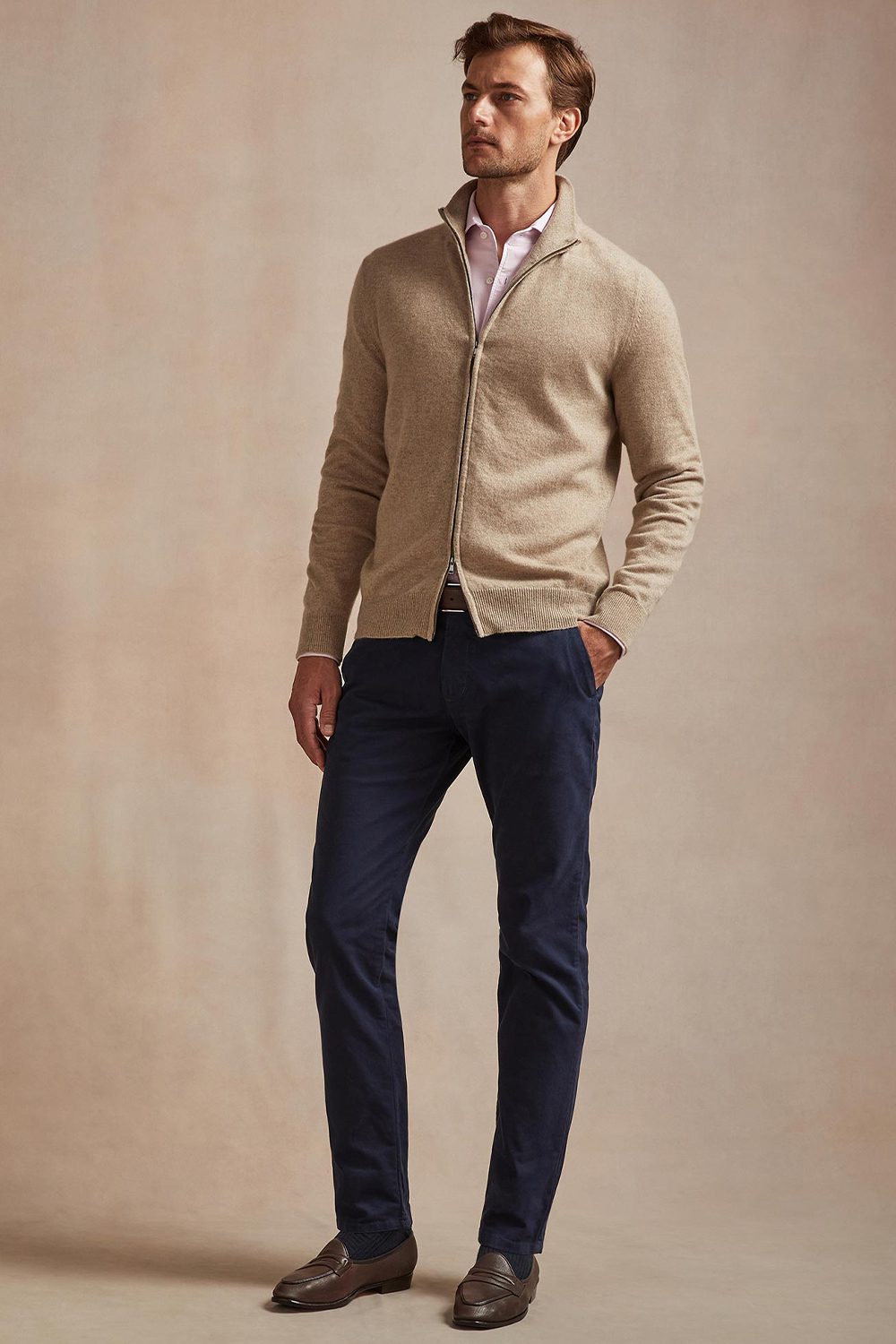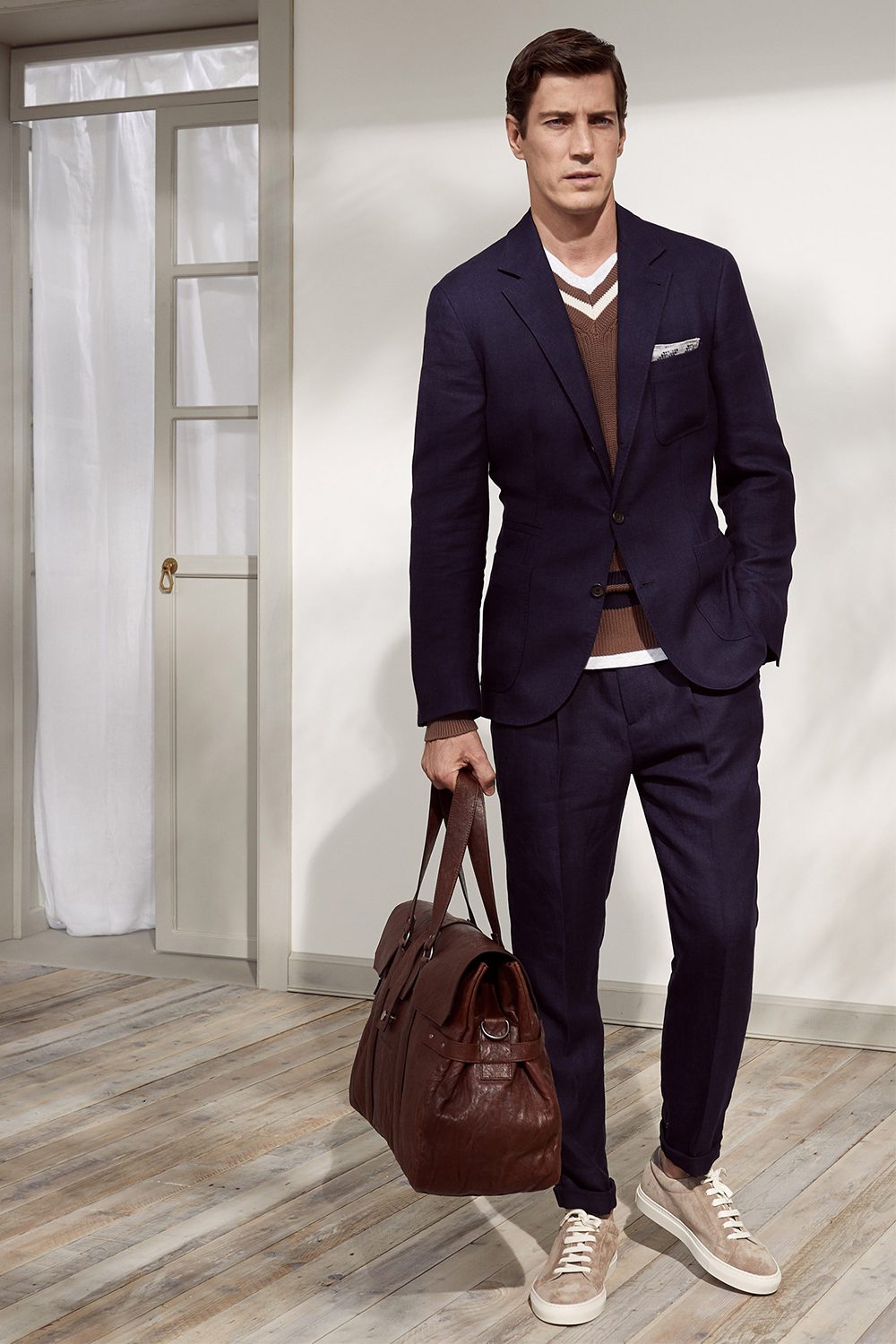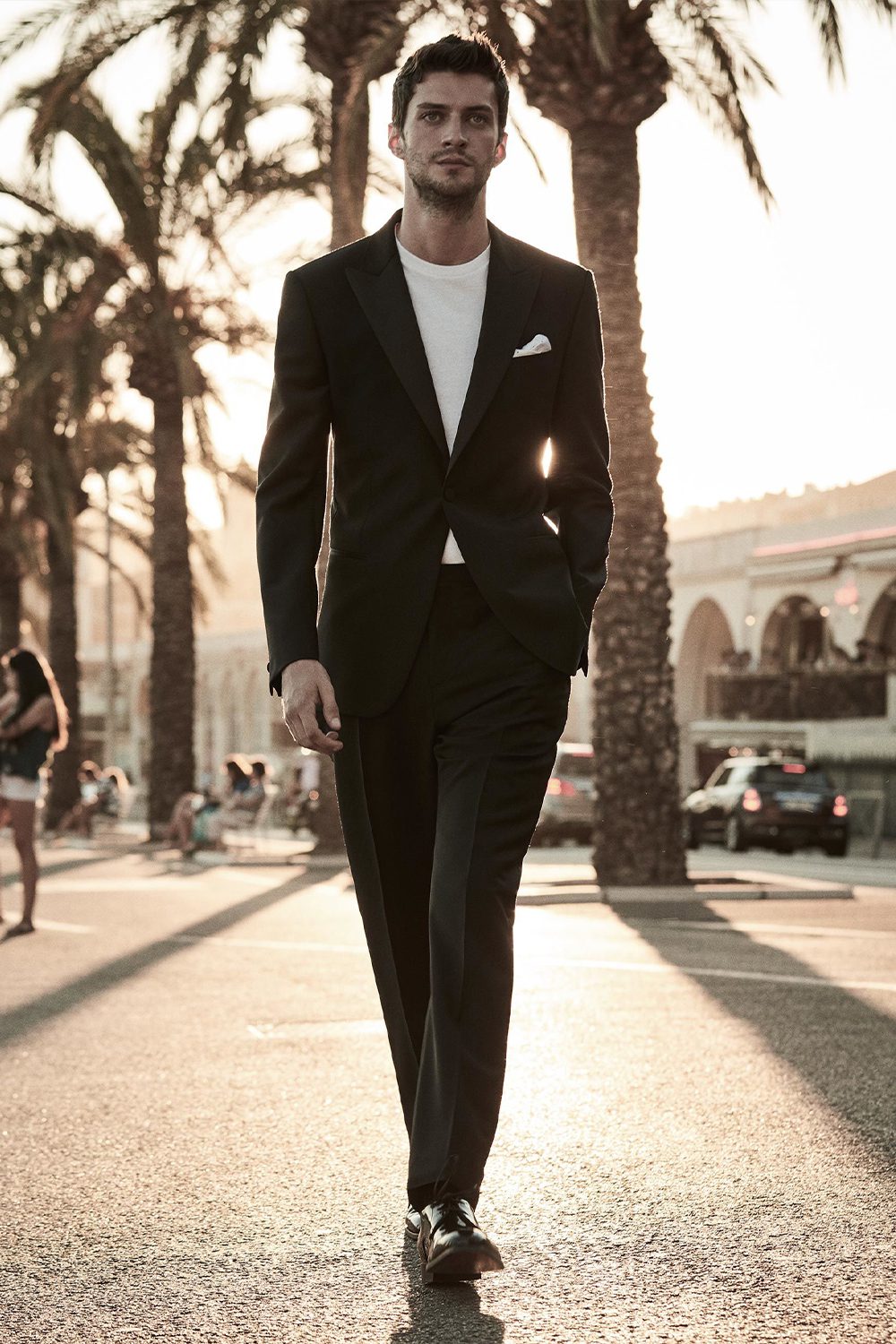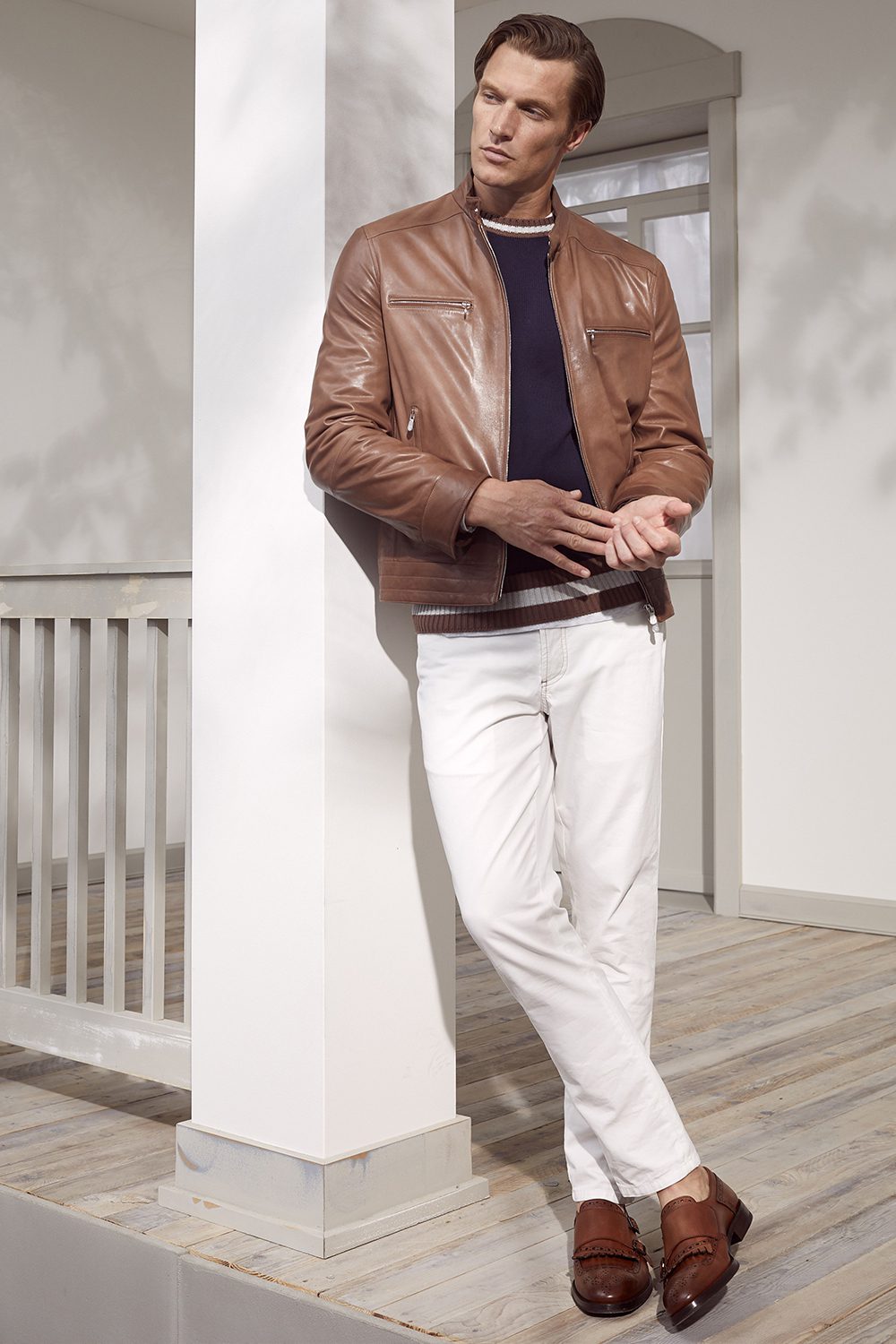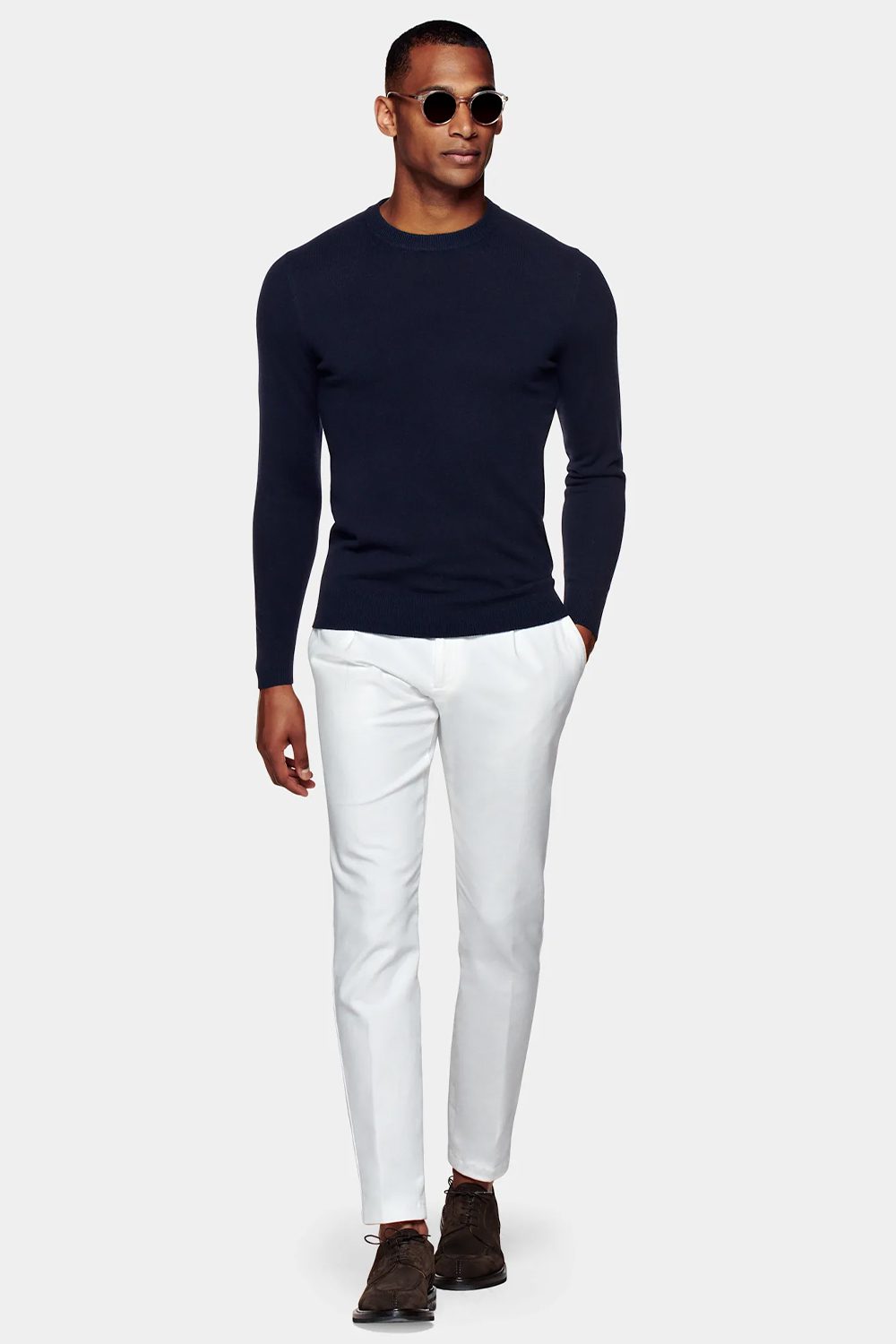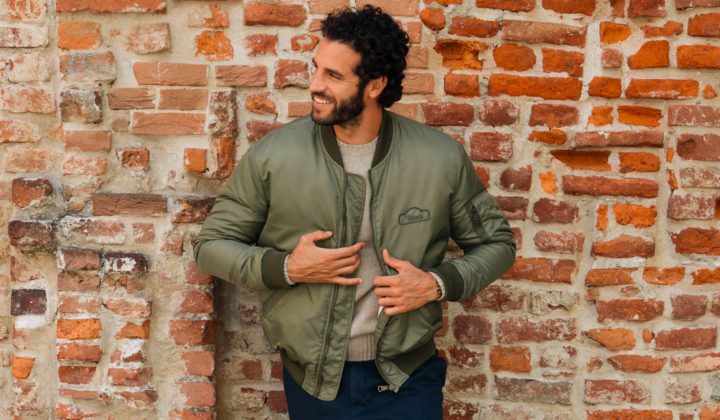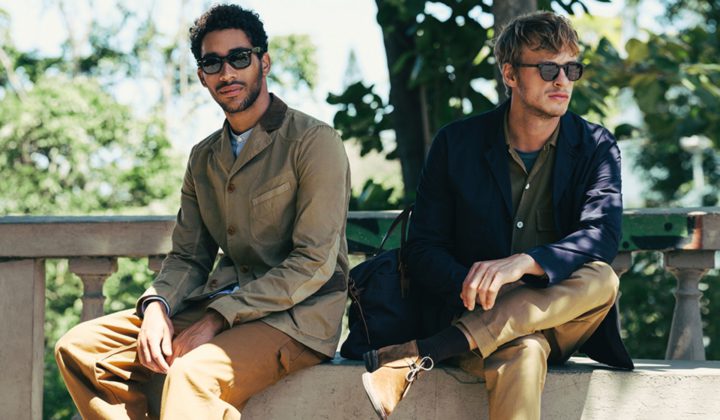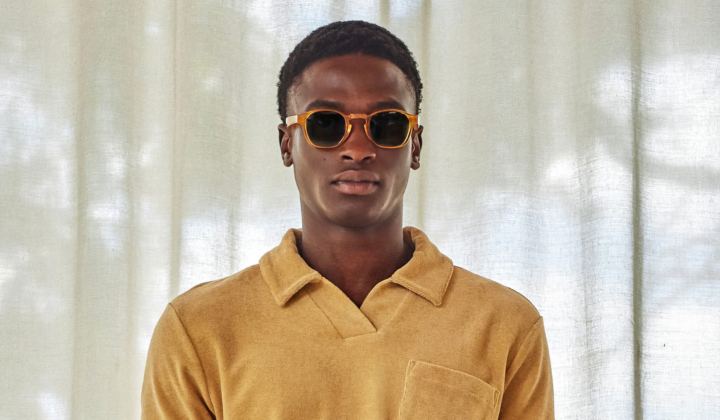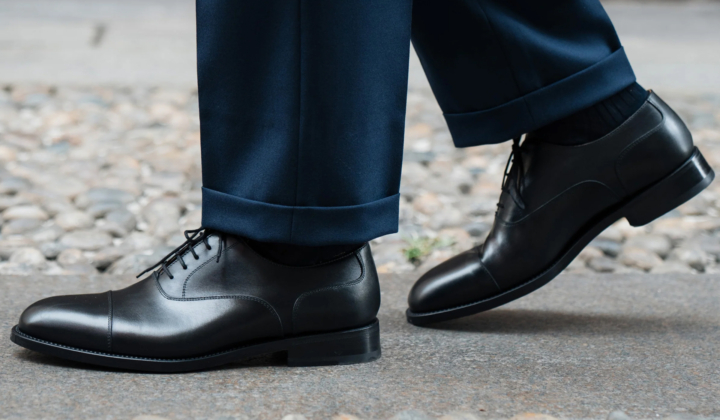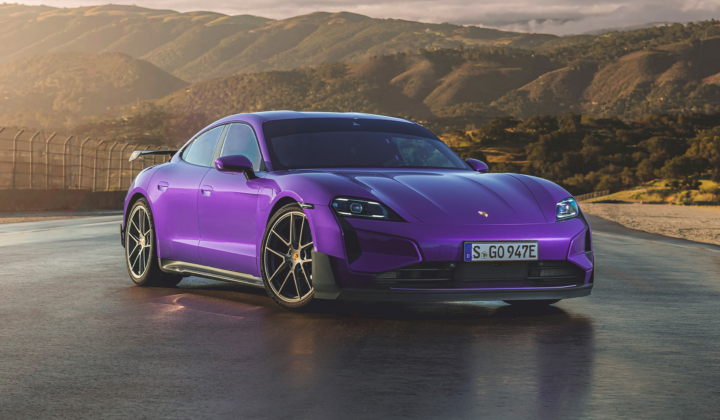Smart Casual Dress Code: A Modern Man’s Guide For 2024
It’s the dress code that nobody wants to see on an invitation. It throws up more questions than answers and boggles the mind of even the most sartorially astute. It’s smart casual, of course, and unfortunately, it’s not likely to disappear any time soon.
The smart casual dress code doesn’t have to induce fear and anxiety though. It can be a good thing. At it’s best, smart casual is sharp and sophisticated but also relaxed and comfortable; it’s able to take you from the office to a date without second-guessing your style, imbuing confidence in the wearer and admiration in everyone else.
But – there’s always a but – if it’s not well executed, it can look boring and, at its very worst, like you’ve just thrown your suit jacket on over a pair of jeans. Smart casual attire is very easy to get wrong, so if you’re stuck or looking for a bit of high-low inspiration, here’s everything you need to know about nailing this ever-tricky dress code.
What Is Smart Casual?
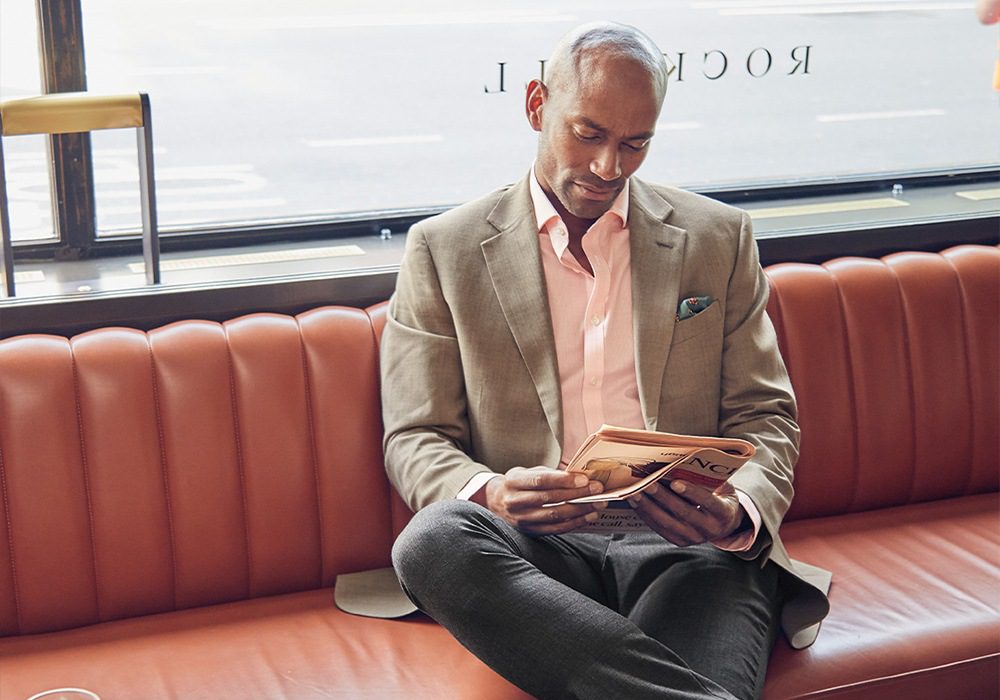
Smart casual is, above all else, confusing. We’ll come out and say that right away. It combines two words that are essentially opposites and expects you to make sense of the gulf between them. Should you dress on the ‘smarter’ side or place more emphasis on ‘casual’? Who knows, but when smart joggers and casual tailoring fall into the same bracket, one thing you can be certain of is a huge number of interpretations.
It doesn’t have to be complicated, though. In one sense, smart casual is a stylistic blank cheque and you can cash it in however you like. You can also take it quite literally and combine the best of both worlds: pair a smart piece of clothing with something more casual, then you are effectively dressing smart casual. Think (the right kind of) blazer with jeans, or a T-shirt tucked into tailored trousers.
You’ll often find the smart casual dress code being used for events that are relatively laid back yet require some level of smartness. Think relaxed wedding receptions, graduations or fancy restaurants where guests are expected to display some level of decorum. But to successfully wear smart casual it’s not as simple as throwing a blazer on top of your jeans – you have to wear the right pieces that complement each other and don’t look too jarring.
The Different Types Of Smart Casual
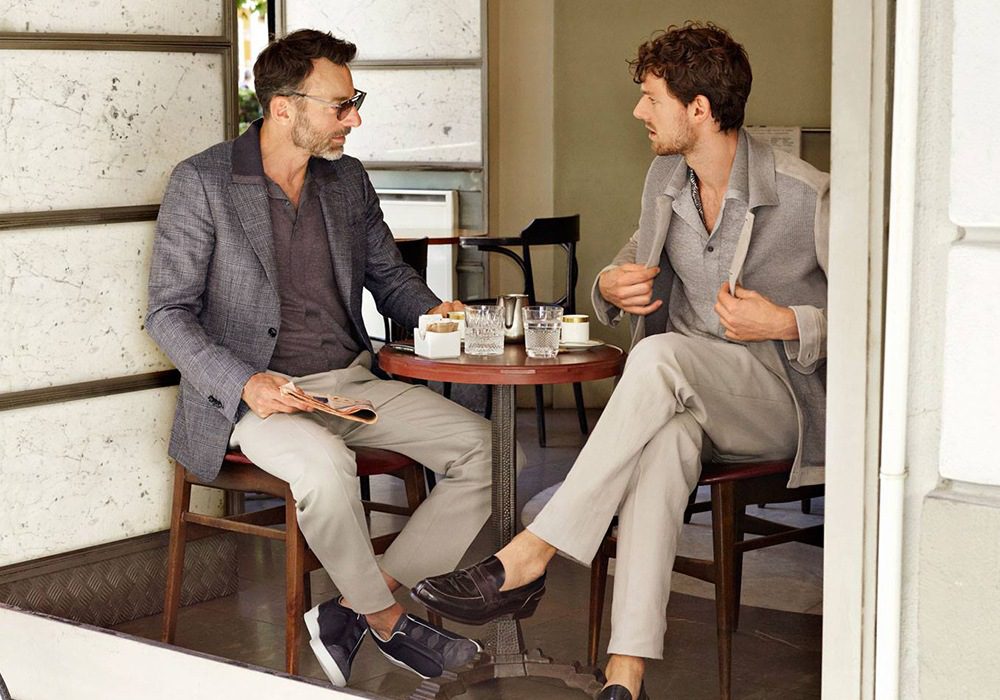
Smart casual means many different things to many different people, not to mention the kind of event or destination you’re heading to. Smart casual at a graduation will likely mean something very different to smart casual on date night.
So when dressing for this ambiguous dress code, it’s important to consider where you’re heading and who you’re heading there with. This will inform just how smart, or just how casual you go. For example, if you’re heading to a graduation, a blazer is a failsafe part of that outfit. Graduations tend to be fairly rigid and formal, and those participating will be wearing gowns and caps, so you certainly wouldn’t be overdressed. Wearing clothes on the smarter end of the spectrum also acts as a sign of respect for those graduating – you’re showing appreciation for how significant the event is.
For a date however, wearing a blazer might be a bit much, depending on where you’re going. In order to not feel overdressed, you might prefer to go fairly smart on the bottom half, with tailored trousers and desert boots, but keep things more laid back up top, with an untucked Oxford shirt and bomber jacket.
The Difference Between Casual & Smart Casual
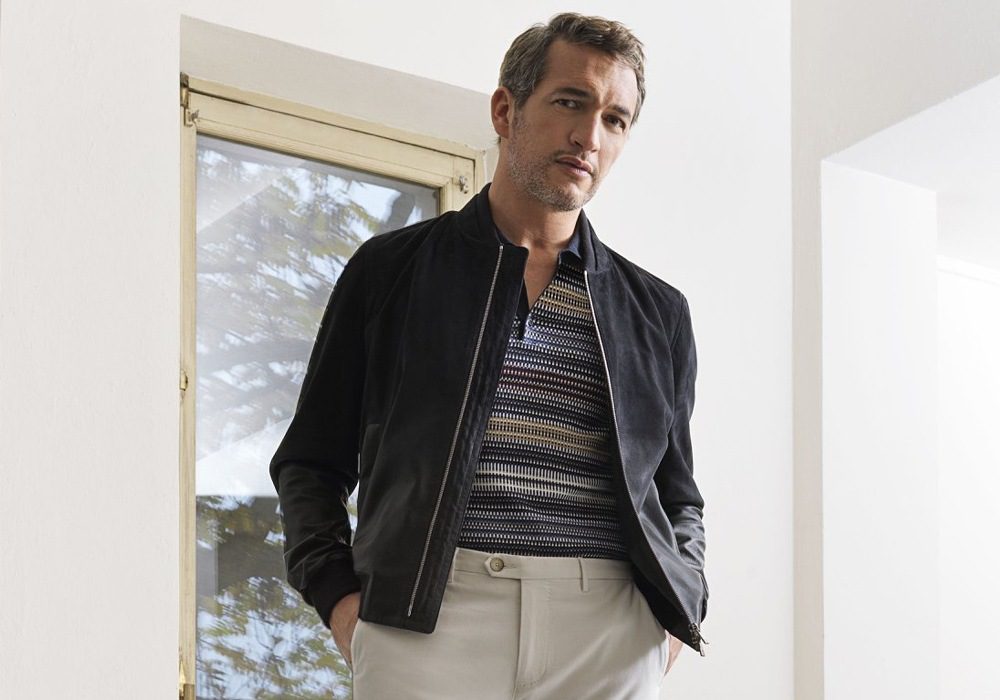
While there are many nuances to smart casual, it’s pretty easy to differentiate from casual dress. Dressing casually requires little thought as there are basically no rules to it. Casual might mean jeans and a T-shirt, or sweatpants, sneakers and a hoodie. You might wear casual clothing when working from home or to the pub with friends.
Smart casual needs a little something extra. It requires an article of clothing typically associated with formality that elevates the look and keeps it from falling into scruffy territory: a pleated trouser, a button-down shirt, a cashmere sweater. Whereas casual clothing is something you might just wear out and about, smart casual is a dress code, and as such needs a bit more effort and thought.
Smart Casual Styling Tips
Remember, the smart casual dress code is a spectrum, so when you’re putting an outfit together, keep in mind where on that spectrum you want to jump in. Here are a few key considerations.
Keep Things Simple, Stupid
- Luca Faloni
- Brunello Cucinelli
If in doubt, don’t go overboard. Stick to tried-and-tested wardrobe essentials including dark denim jeans, chinos, Oxford shirts, unstructured navy blazers and simple knitwear. Smart casual is often at its best when it’s understated.
Complementary Colours
- Suitsupply
- Reiss
Smart casual dress might see you wear separates in place of a traditional suit. Which means, of course, pairing a miss-matching blazer and trousers. If you plan on doing so it’s best to stick to muted, complementary colours – think classic grey wool trousers paired with a navy blazer and white shirt. Or, for something less obvious, try earthy tones including green, stone and brown.
Nail The Details
- Faherty
- Thom Sweeney
Because we’d advocate keeping things simple, we’d also recommend that you nail the details of smart casual wear, as they make all the difference. That means paying attention to the little things, like ensuring your trousers aren’t too long (if they are you should get them tailored to finish just above your shoes); making sure said shoes are clean or polished if they’re leather; matching your leathers, so your belt and shoes don’t clash, and so on. The details matter.
Start Casual
- L’Estrange London
- Reiss
One easy way to build a smart casual look is to start on the casual end of the spectrum. Wear what you normally would in a casual situation, then swap out one or two pieces with something more formal. For example, start with a simple jeans, T-shirt, hoodie and sneaker combo. This is a staple casual look, but also one that can easily be dressed up.
To make it smart casual, all you’d need to do is swap the hoodie for an unstructured blazer, and you’re there. Or, keep the hoodie and add a slimline bomber jacket and Derby shoes in place of sneakers.
Key Smart Casual Pieces
Oxford Button-Down Shirt
- L’Estrange London The All Day Oxford Shirt
- Thom Sweeney Heavy Cotton Casual Button Down Oxford Shirt
- Thom Sweeney Cotton Cashmere Casual Button Down Oxford Shirt
- Asket The Oxford Shirt
A true icon of menswear, the Oxford button-down is the do-anything, go-anywhere shirt. Worn by some of the most stylish men of all time including Miles Davis Jr, Paul Newman and James Dean, the button-down began life on the polo field. Polo players in the 19th century struggled with their shirt collars flapping around, so buttons were added to keep them in place, allowing the riders to look smart without compromising their game as they punted balls around on horseback.
Since then the button-down has become an essential piece, favoured as it was by the Ivy League set in the 50s and 60s, before becoming a Ralph Lauren staple in the 80s and 90s. It’s a more informal take on the traditional collared shirt, making it perfect for wearing as part of a smart casual get up.
Unstructured Blazer
- L’Estrange London The 24 Blazer Wool
- Wax London
- Thom Sweeney Wool Unstructured Single Breasted Jacket
- Reiss Soho Slim Fit Double Breasted Wool Blend Blazer
An unstructured blazer is very different from your regular suit jacket. Unlike the latter, it features little to no padding in the chest and shoulders, allowing the fabric to drape over your body rather than shape it.
A traditional blazer usually features heavily roped shoulders, which create sharp, powerful lines that are inherently formal and associated with business wear. An unstructured jacket on the other hand looks more laid back and natural, so it easily combines with casual attire like chinos, T-shirts, polo shirts and knitwear. If you’re going to wear a blazer as part of a smart casual look, make sure it’s unstructured.
Drawstring Trousers
- Thom Sweeney Cotton Twill Drawstring Tailored Trousers
- L’Estrange The 24 Trouser – Olive
- Wax London Kurt Trousers Navy Heavy Twill Longer Leg
- Aurelien Brown Linen Seaside Trousers
Up until a few years ago, drawstring trousers weren’t really a thing. But with the casualisation of the way people dress (which accelerated during the pandemic), they’ve arguably become the trousers to go for.
The drawstring offers unrivalled comfort over a traditional, fixed waistband, expanding and contracting with your body in the same way that sweatpants do. Although, of course, they’re made from smarter fabrics including cotton and wool, making them look, from the outside at least, like a regular pair of tailored trousers.
Wear them as you would a pair of chinos, and combine them with other menswear staples including loafers, merino knitwear and an overcoat.
Minimal Sneakers
- Thom Sweeney Leather Sneakers
- Oliver Cabell Low 1
- JAK Royal S01 SD
- Crown Northampton Harlestone Hand Stitch Derby
Minimalist sneakers aren’t a new phenomenon, but they still remain one of the best options for smart casual footwear. A pair made from leather, with a clean, pared-back design will wear as well with denim jeans as they will with tailoring, which is not something many shoes can claim. Common Projects were arguably the first to popularise the style, but numerous brands with a range of price points produce their own take today, so whatever your budget you’ll be covered.
Jeans
- ASKET The Raw Denim Jeans
- Closed Unity Slim Jeans
- Citizens Of Humanity X Billy Reid Adler Jean
- A.P.C. Petit Standard Slim-Fit Stretch-Denim Jeans
Jeans are an obvious smart casual staple, perhaps, but one that’s easy to get wrong. Aim for a dark pair in either black or unwashed indigo, as these lend themselves best to smarter looks. (Dark colours always fall on the smarter side of things, but they’re also the easiest to wear.)
Dark jeans will combine effortlessly with Oxford shirts, Derbies, sneakers and basically every other piece of classic menswear. For the fit, aim for something middle of the road – that is, not too slim, not too wide. A straight or regular fit always looks good. Just make sure to roll the hem so that they finish just above your shoes, giving a clean, unbroken trouser line.
Brown Derby Shoes
- Thom Sweeney Calf Leather Derby Shoes
- Kleman Padror Brown Leather Tyrolean Shoes
- Velasca Cartee Suede Derby
- Crown Northampton Grove Desert Shoe
Derby shoes are the more casual cousin of the Oxford, the difference found in the laces. Oxfords have a ‘closed’ lacing system meaning the eyelets are sewn under the front part of the shoe, giving a sleek look better suited to wearing with formal tailoring. Derbys on the other hand have an ‘open’ lacing construction, where the eyelets are sewn on top of the vamp allowing the shoes to be more comfortable and easy to wear.
In short, Derbys are not too smart, not too casual, and combine as well with denim jeans as they do smarter trousers. Look out for Derbys with a slightly chunkier rubber sole, which gives a contemporary look while offering plenty of grip in poor weather conditions.
Chinos
- ASKET The Chinos Black
- Thom Sweeney Cotton Easy Fit Flat Front Chinos
- Closed Clifton Slim Chino
- Billy Reid Chino Pant
Chinos have long been the go-to style for those after something that looks put together without being stiff. Technically, they’re tailored trousers, cut with slanted side pockets and a zip fly, but it’s the material that differentiates them.
Chino is actually a fabric – a cotton twill first developed in the 19th century for the British and French military, designed to be durable and comfortable for troops to wear on exercise. Traditionally it would be dyed in a khaki colour, but today can be found in almost any shade, many of which would look vastly out of place on the battlefield.
The chino no longer bears its military connotations, as it’s become one of the most popular trouser styles for men, outside of jeans. Look for a pair that’s cut with a regular tapered fit, has room in the thigh but narrows towards the hem. If you ask us, tight or skinny fit chinos have had their day.
Key Smart Casual Outfits
All Black
- Reiss
- Ralph Lauren
If in doubt, an all-black smart casual look rarely fails. Sleek and sophisticated, tonal black clothing is easy to wear and nearly always makes the wearer appear slimmer, which is no bad thing. It also channels a certain nonchalance that is often lost on more colourful looks.
Just remember to look for a range of textured fabrics in your look. Think leather, moleskin, cotton twill or lambswool – materials that add a bit of visual interest, keeping your outfit from appearing too flat.
Blazer With Jeans
- Gieves & Hawkes
- Brunello Cucinelli
This classic combo is a smart casual staple, but it has to be done the right way. For the blazer you’ll want an unstructured cut, with natural, unpadded shoulders. This ensures it’s more casual, and avoids looking like you’ve just thrown your suit jacket over the nearest pair of jeans you can find. Speaking of which, the jeans should be straight and dark – either deep indigo or black, so they complement the smartness of the blazer.
Elevated Casualwear
- Massimo Dutti
- Hackett London
It is possible to dress smart casual without actually switching up your style. Simply look out for casual pieces you’re already comfortable with, but cut in more luxurious fabrics. Bomber jackets in suede or leather; T-shirts in merino wool; knitwear in cashmere. These are all pieces usually worn in casual settings, but when made from these fabrics they take on a smarter look that’s perfect for combining with chinos and Derbies.
Knitted Polos
- Ralph Lauren
- Reiss
Of all the options on this list, the knitted polo might be the smart casual dress code’s secret weapon. More laid back than a shirt but smarter than a crew neck thanks to its collar, knitted polos are ideal for wearing with tailoring, but also look great above a crisp pair of denim jeans.
Incredibly versatile and easy to wear, look for one in classic navy, brown or olive green and wear it with virtually anything in your wardrobe.
Lose The Tie
- Brunello Cucinelli
- Boglioli
One way to dress for a more formal smart casual event is to wear a suit without a tie. It sounds simple, doesn’t it? But there are, as always, a few rules to consider. Keep the suit as laid back as possible, by looking for one in an unstructured, single-breasted cut, and pair it with an Oxford, denim or grandad collar shirt.
Wear it over loafers, boat shoes, chukka boots or Derbies. These subtle swaps ensure you don’t look like every other desk jockey who’s spilled out of the office at 6pm.
Roll Neck
- Luca Faloni
- Reiss
Once the preserve of comedy villains and academics, the turtleneck has achieved immense popularity over the past few years, with many men realising its versatile potential as a smart casual essential. Simply wear your roll neck with anything you’d normally pair a shirt with, for a look that’s equal parts sophisticated and relaxed.
Split It Up
- Canali
- Thom Sweeney
Splitting tailoring up into separates has long been a way of making the suit more casual. By wearing two separate, mismatched pieces of tailoring, you strip the suit of its more formal, business-like connotations, opening up room for more creativity and smart casual flair.
There are endless combinations available here, from pairing cords with a textured blazer to a Riviera-inspired white trousers and navy jacket look, so experiment a little and see what works. It’s also a way of getting more wear from the pieces you already own.
Shirt & Knits
- Reiss
- Luca Faloni
One of the more classic smart casual combinations involves layering a shirt under knitwear. Whether you opt for a crew neck, V-neck, cardigan or cable knit, shirts always look sharp with knitwear, while also offering the necessary warmth in the colder months.
Shirt Substitution
- Brunello Cucinelli
- Reiss
Another way to mix up (and dress down) the suit is by getting rid of the shirt altogether. Shirts are often thought of as a way to complete the suit, framing the face and complementing the formality of tailoring perfectly. But remove them from the equation and the suit instantly looks more laid back and casual. A well-cut T-shirt is hard to beat when worn under a lightweight, unstructured suit, but for autumn a classic knitted polo or cricket jumper can also provide a stylish element of surprise.
White Legwear
- Brunello Cucinelli
- Suitsupply
They’re not for the faint hearted, but white trousers or jeans can form the ideal backbone of a smart casual get up. Typically associated with warmer climates, white trousers have an Italian, Riviera-inspired feel to them, making them ideal for wearing to beach weddings or cocktail parties.
If you muster the courage to give them a go, dress them down with muted wardrobe staples such as jackets and knitwear in navy or brown. And stick to G&Ts and anything else that won’t leave a stain.
A Brief History Of Smart Casual
It’s difficult to pin down exactly when and where the term ‘smart casual’ came from, but it’s widely thought of as being invented in the middle of the 20th century. During this period, men in western countries would, as a matter of pride, wear tailored clothing every day. Suits represented something greater than the sum of its parts. If you wore a suit you were a respectable citizen, one that took care of himself and his family.
Suits were the norm, so when the term ‘smart casual’ started cropping up, gaining real traction from the 80s onwards, it essentially implied wearing a more casual suit than the typical business two-piece. It also coincided with the term ‘business casual‘, which basically meant the same thing. Both terms have caused endless confusion since, but there is one key difference between the two: business casual refers to clothes worn for work, whereas smart casual is a dress code (usually) for occasions outside the office.
